The Network on a String
Angel Theory – Paradigm Shift: Book 2.
Backstory / Prequel
An Economic Theory of Everything
By Nick Ray Ball 15th November 2017
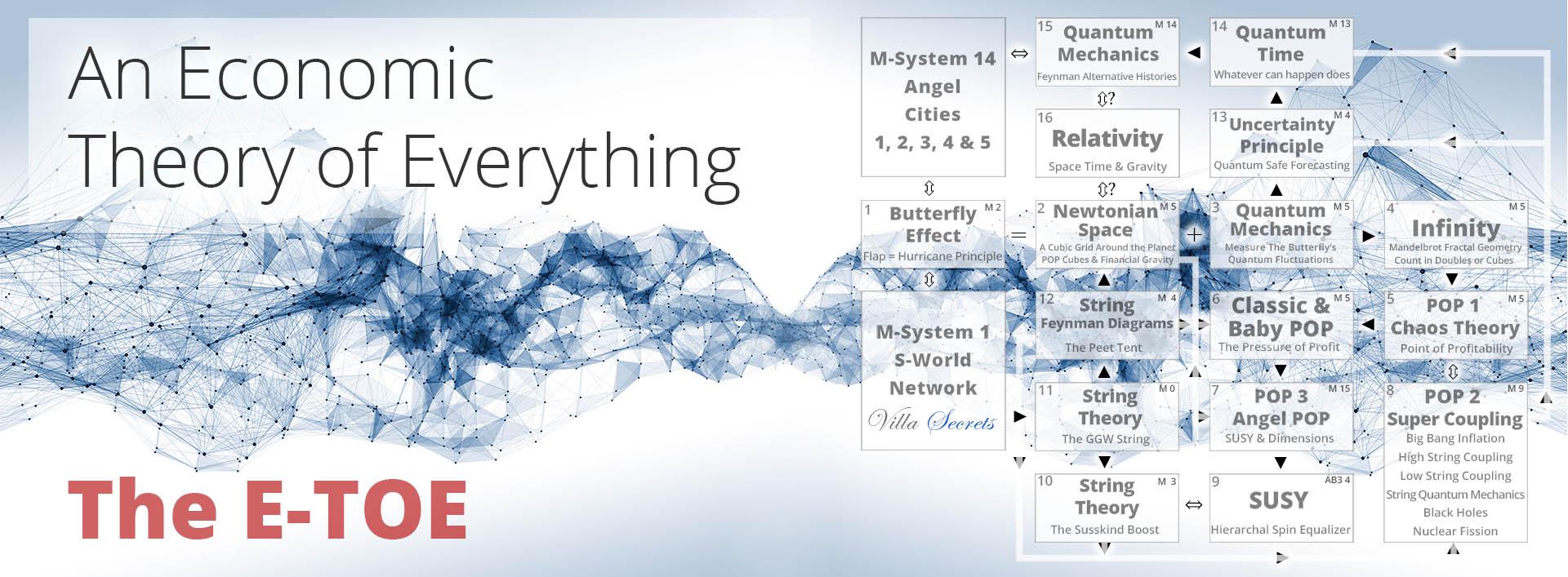
PRESENTING:
Chapter 3: The Network on a String
An Economic Theory of Everything Part 3: How the String Theory Systems maintain the integrity of the Financial Gravity and create Equality.
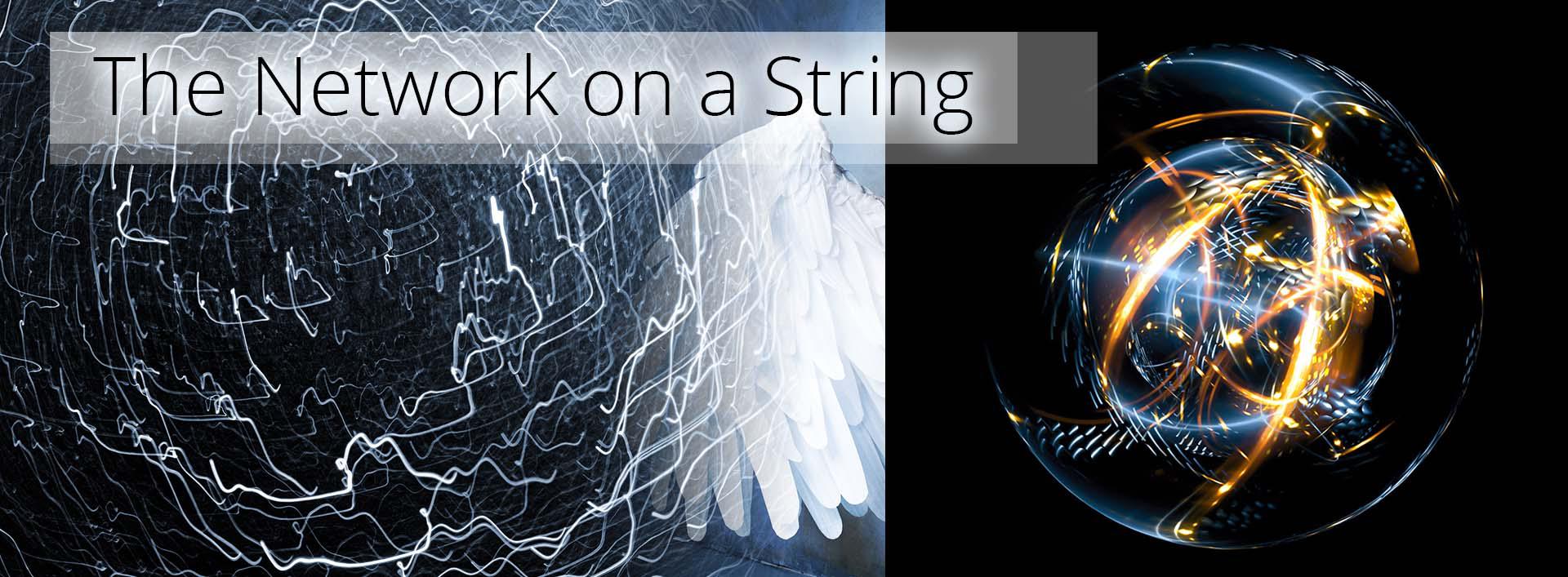
Inspired by Sienna Skye
In 4,095 Words
Version 6.59-3r
Index
The Susskind Boost
Step 10. (M-System 3) ‘The Susskind Boost’ (April 2016)
The GGW String
Step 11 (M-System 0) – The GGW String (Greene/Green/Witten) (Late 2016)
The Peet Tent
Step 12 (M-System 4) – The Peet Tent (Nov 2012 to 2018)
Baby POP, Grand-Networks, POP Trains and The Boat
Step 6b (M-System 5) – POP (Point of Profitability) (2012)
SUSY Hierarchal Spin Equalizer
Step 9. (Various M-Systems) The SUSY Hierarchal Spin Equalizer (2012)
Angel POP Equality – 2012 to 2017
Step 7. (M-System 15). Angel POP Equality Systems (2012 – 2017)
Grand Networks in areas of Abject Poverty are Special Projects
Step 7. (M-System 15). Angel POP – Grand Networks in areas of Abject Poverty are Special Projects (2016 – 2017)
Step 10. (M-System 3). The Susskind Boost (April 2016)
Source: Leonard Susskind-Lecture 1 | String Theory and M-Theory
https://www.youtube.com/watch?v=25haxRuZQUk
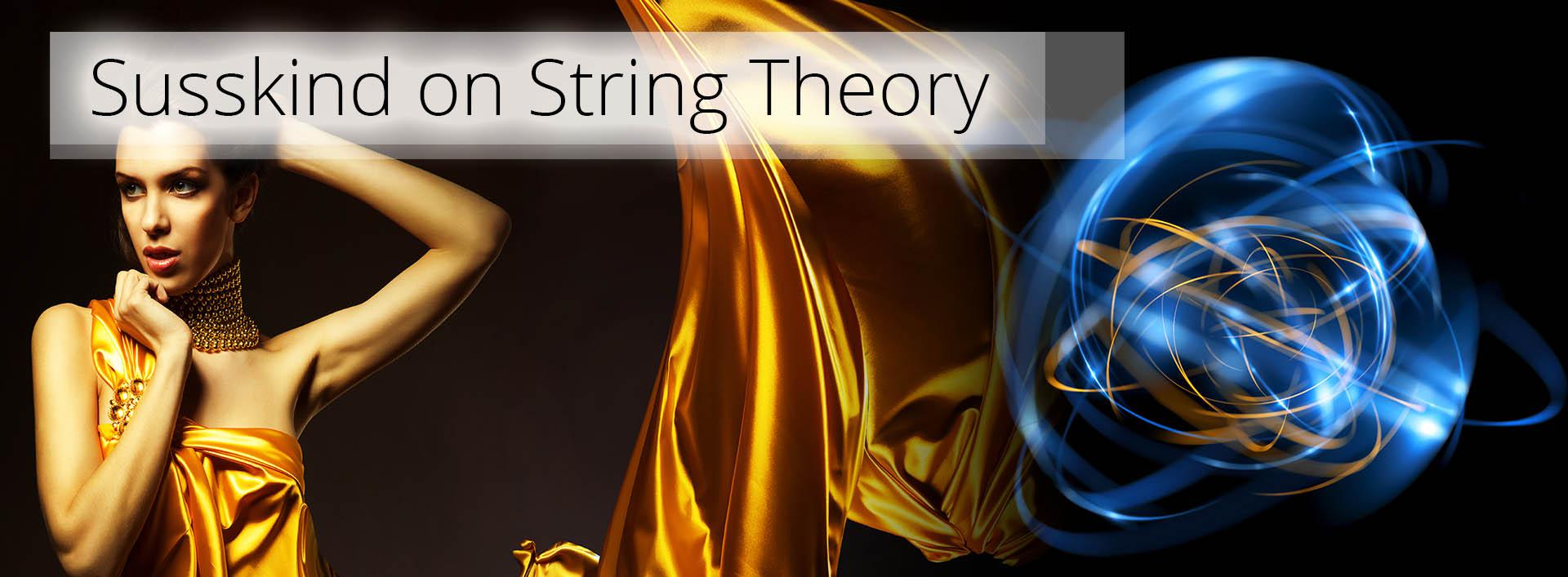
‘We boost the hell out of the system along the Z axis (gross profit) until every single particle (company) has a huge momentum.
If there is any particle (company) that is going backwards along the Z axis (gross profit), you just have not boosted it enough.
Just boost it some more until it’s going forward with a large momentum.’
To apply this to the network, we change a particle for a company and the Z axis to gross profit. And in general, we always boost the weakest companies in the network until they are going forward and are creating a healthy POP investment.
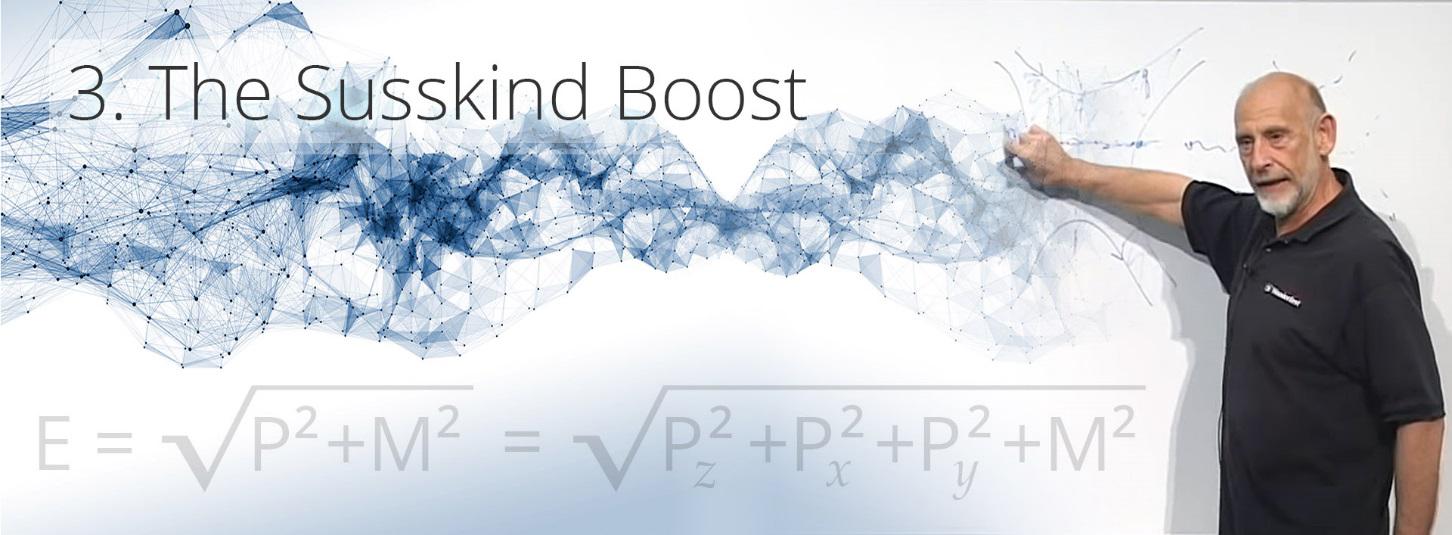
There are tonnes of ways to boost a company’s profit without giving direct financial assistance.
Here are some options: Ť the award of tenders, Ŵ additional websites, Ƈ = contracts or mandates, and in addition: higher ROI advertising, or making a company’s goods or services a preferred purchase for those who have network credits (Planck Cubits).
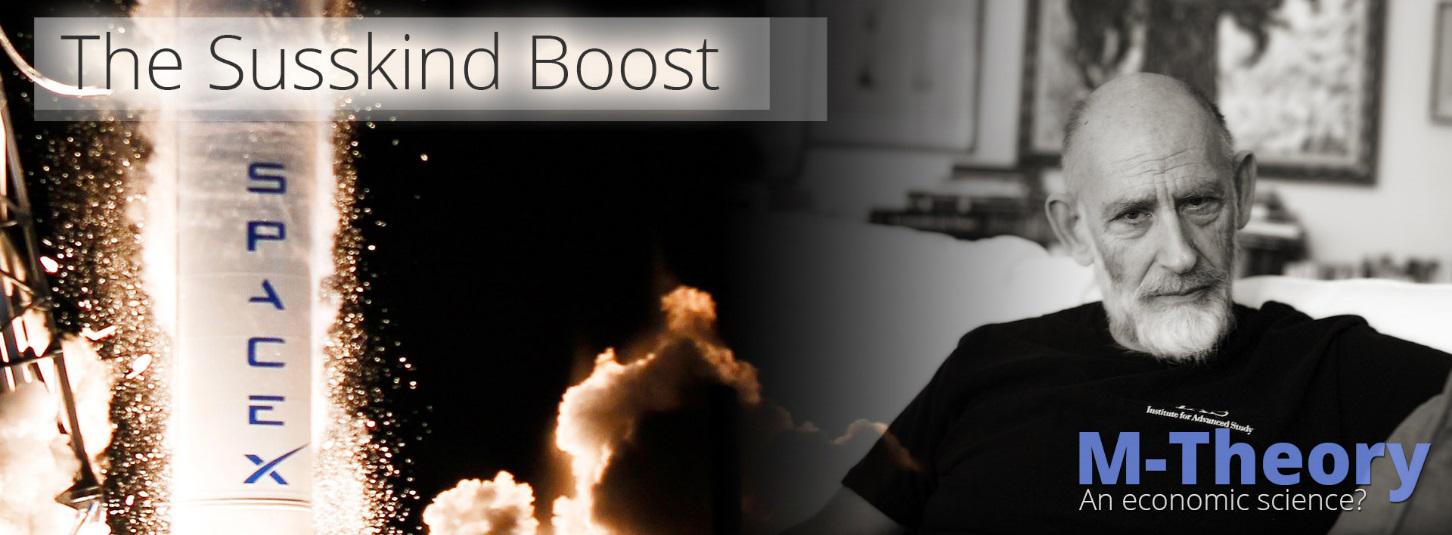
However, if a company is in actual trouble, we apply ‘The Peet Tent,’ the shape of the GGW String that assists troubled companies, giving them the lift to be boosted further by The Susskind Boost; which will continue to boost the companies until they are creating POP again, so repairing the integrity of each network’s cube until we see 64/64 across the board. This process never ends, but will become mostly unnecessary for established cubes when the network becomes massive.
Step 11 (M-System 0) – The GGW String (Greene/Green/Witten) (Late 2016)
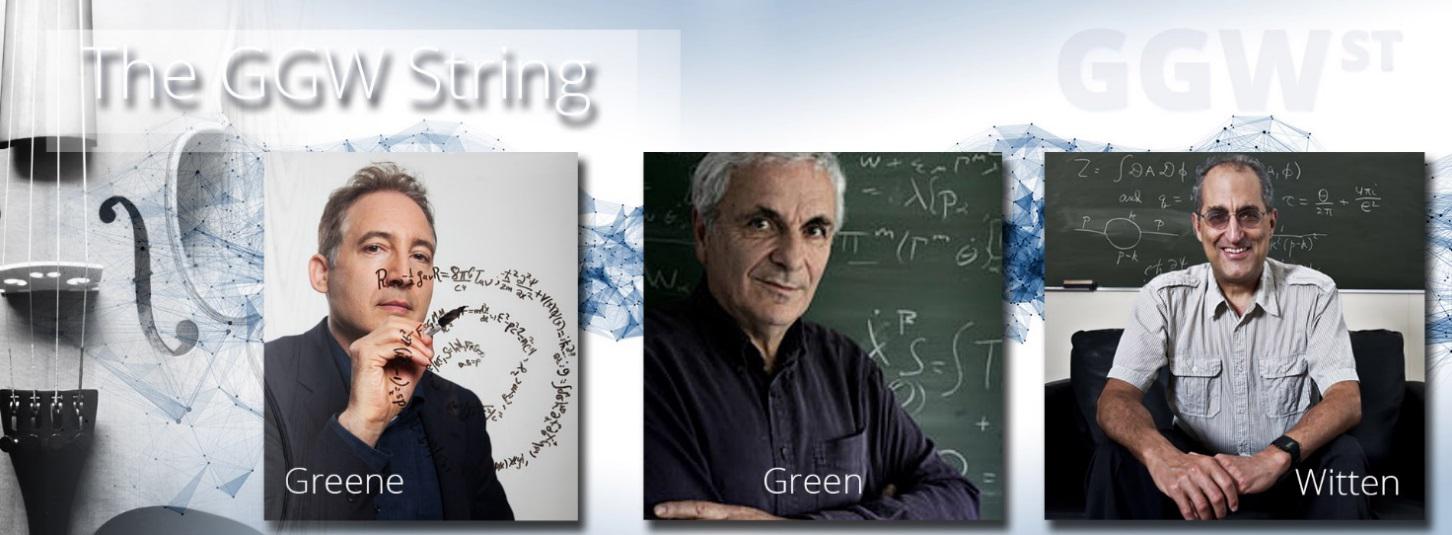
Named after the 3 physicists: Brian Greene, Michael Green & Edward Witten, who from 2012 to 2016 assisted my basic understanding of string theory.
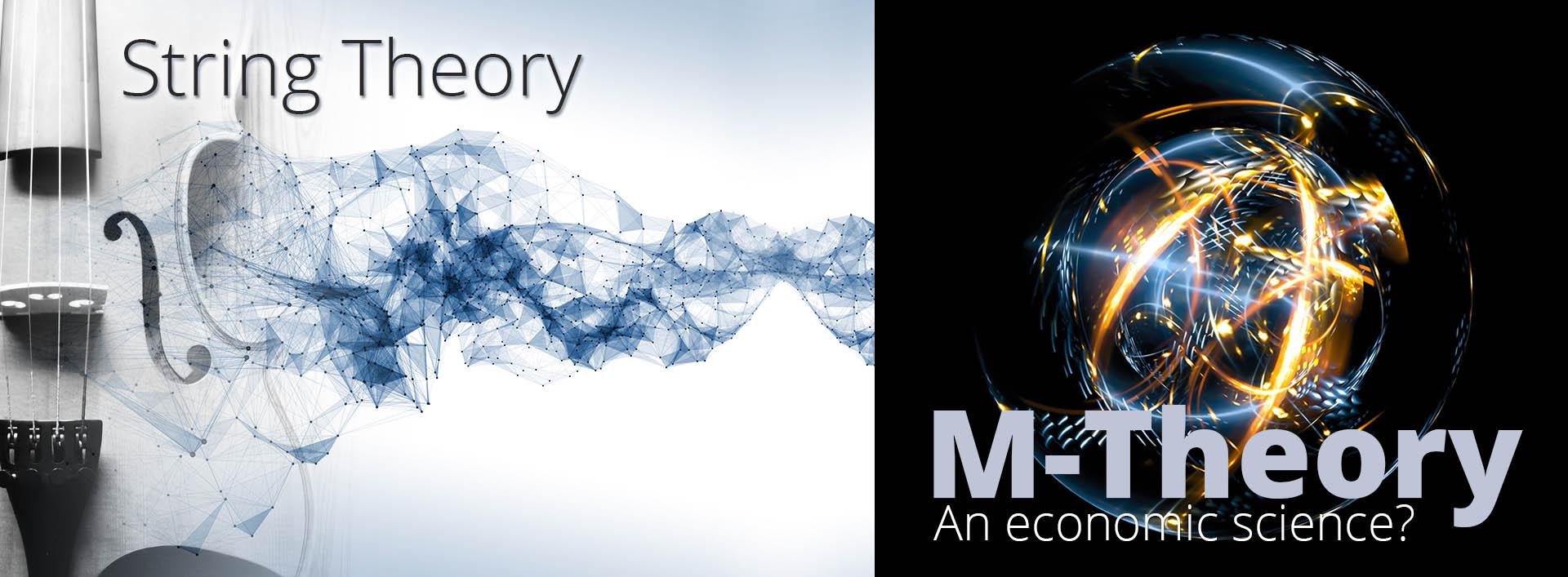
The GGW string considers the most fundamental properties of string theory; ‘the strings themselves’ and that a good simulation in economics is for strings to be equivalent to the money earned by the S-World Network (the holding company/foundation/operating system), and the different ways we spend the money are the different shapes of the strings.
Instead of POP investment, the GGW String primarily receives its income from the gross profit from each company within the network.
However, after reading ‘The Real Crash’ by Peter Schiff, a solid case was made for lowering or removing direct taxes on company’s income. Remember POP only applies after a company has done very well, and even then, it’s an investment not a tax. But the GGW-String income is a direct tax on profits.
One can say that such a direct tax on gross profit is the equivalent to a standard franchise fee. However, in creating M-System 1. Villa Secrets, it was decided that the 5% equivalent of a franchise fee should be lowered closer to 2.5%, at least until the bulk of the systems were developed. And that the 2.5% be used almost exclusively for web, software, and network development; creating the systems that directly increased profit for the networks thus creating a Nash Equilibrium.
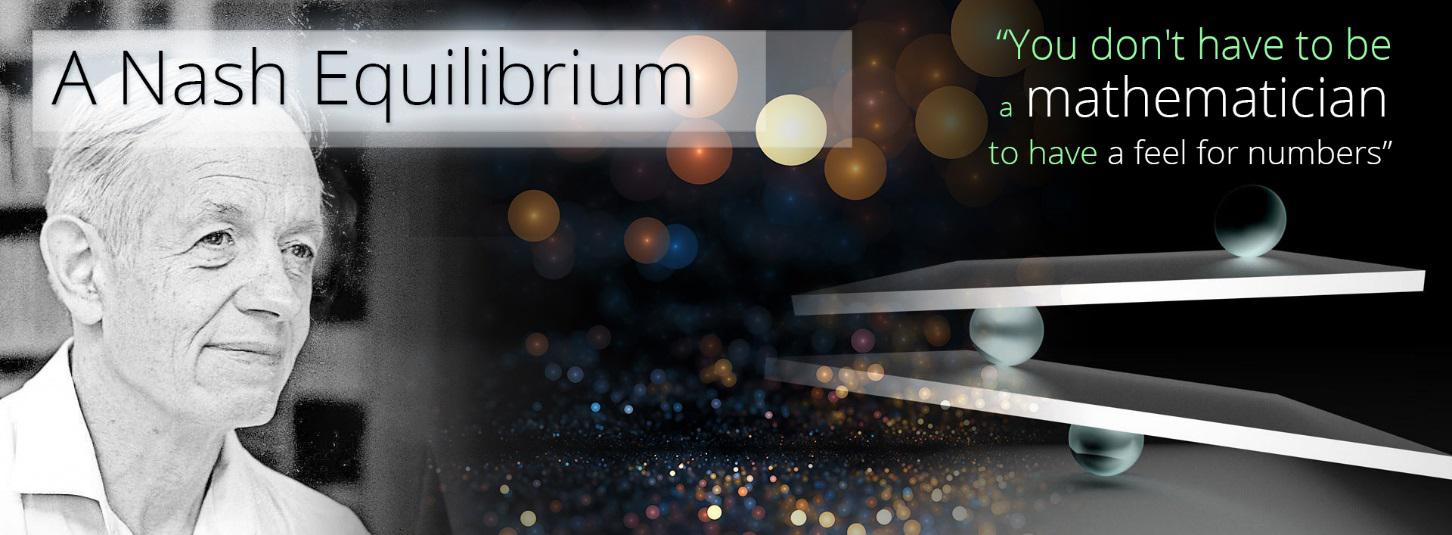
Professor John Nash, winner of 2 Nobel Prizes and famous for being the subject of the Oscar winning film ‘A Beautiful Mind.’
A Nash Equilibrium is most often seen within game theory, it is in essence a win/win scenario, where one would choose the same outcome regardless of enforcement.
In the case of S-World Villa Secrets and the 2.5% of turnover contribution towards the development of software and the network, this is forecasted to return from 25% to over 100%. So, to make a 25% or more increase from a 2.5% contribution is an action any sane company or individual would choose to make; hence a Nash Equilibrium, at least of sorts.
However, it is quite possible that at a later point, this percentage will increase to provide some GGW String funding, which may be fully exclusive to the Susskind Boost and Peet Tent and seen as an insurance contribution, insuring the integrity of the network and every business within.
Step 12 (M-System 4) – The Peet Tent (Nov 2012 to 2017)
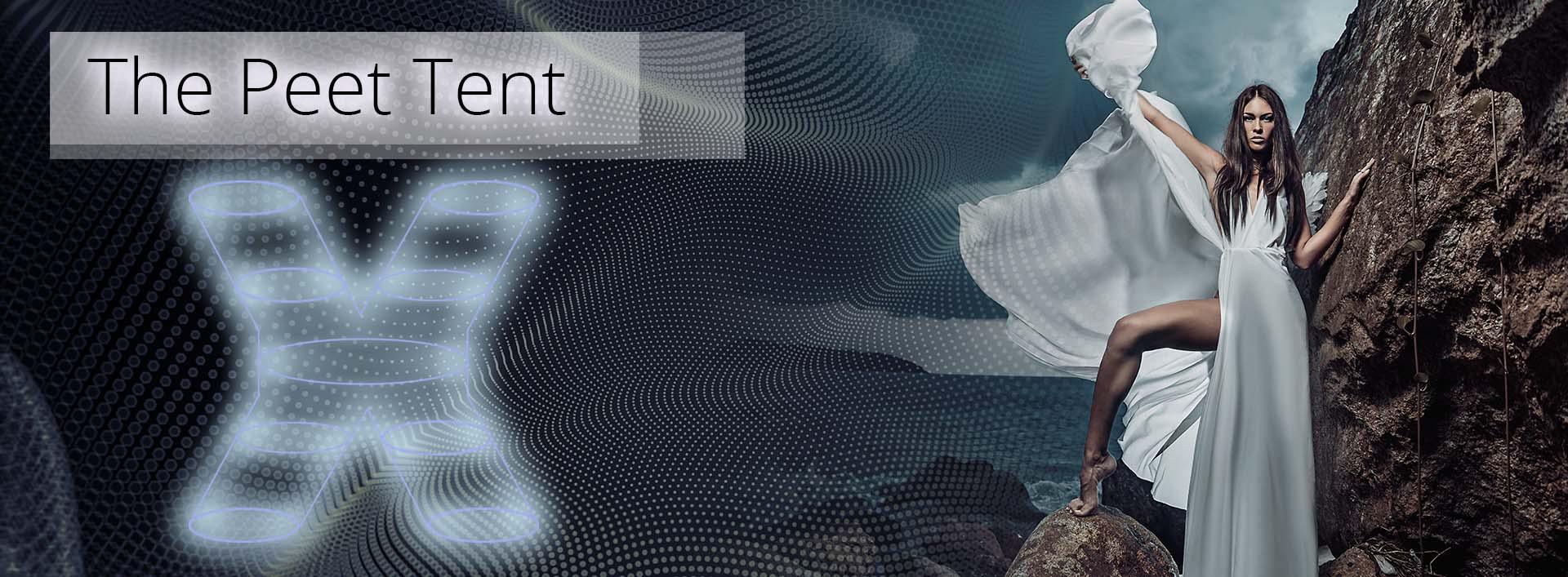
The Peet Tent was the principle of physics from American Butterfly in 2012 that became the foundation for Angel Theory’s M-Systems in March 2016.
But first a little history. Before starting S-World in 2011, between 2008 and 2011 while researching the Virgin network, it was noted that Sir Richard Branson made mention that the Virgin Network is a network of different companies (as is S-World). But in the case of Virgin (and most such groups), if one company failed, it was detached from all others, so all others were safe. This is of course the sensible way to create a network and was respected, but it was not in the spirit of ‘A Theory of Every Business.’
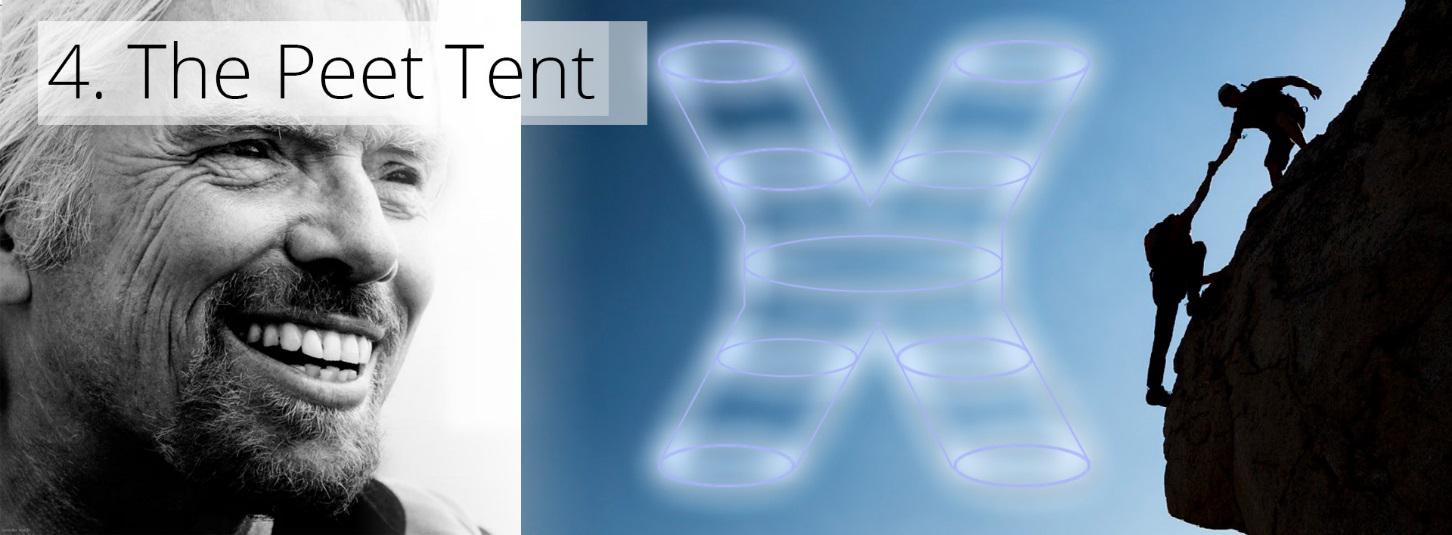
The Peet Tent is the answer to this dilemma
Sources:
- Dr Amanda Peet: String Theory for the Scientifically Curious https://www.youtube.com/watch?v=PpQngpaHamg
- American Butterfly Book 3 ‘The Network on a String’
http://americanbutterfly.org/pt3/the-network-on-a-string/cfm-pop-analogies. - Dr Amanda Peet: String Theory Legos for Black Holes https://www.youtube.com/watch?v=MlDd2HtFfPU
The Peet Tent is a shape of the S-World string that protects companies from failure within the network.
Below on the right, we see what is known as a ‘String Feynman Diagram’ (also known as a baggy pants diagram) adapted to M-Systems, where instead of partials we see positive and negative financial results within the boundary of the pants/tent.
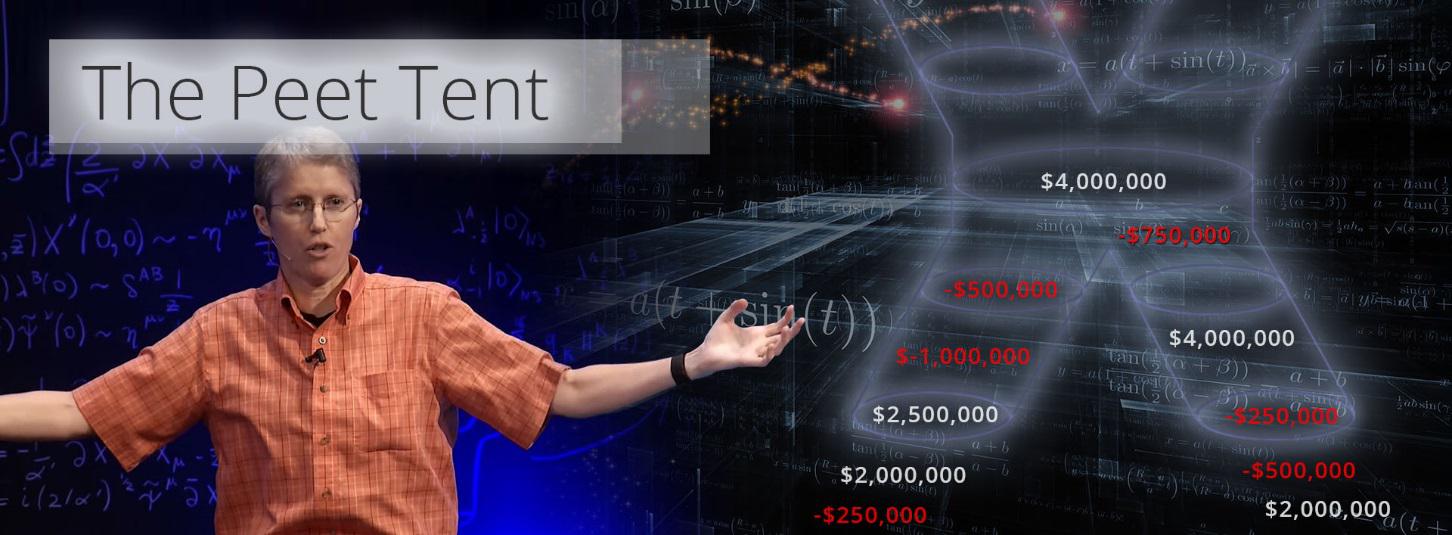
In string theory this is it, the theory of everything; as this is how the jittery and unpredictable results from quantum mechanics unify with the smooth results from general relativity (Einstein’s theory of gravity) as they all fit within the string theory Feynman diagram’s baggy tent. This is also why string theory is said to be a very economic theory.
In the end, the simulation in economics was simple enough (albeit it would take years to work out), one must make provision for companies in trouble. If applying the Susskind Boost did not work by adjusting opportunities, one must apply The Peet Tent; which provides direct income to the Susskind Boost, so boosting troubled companies back to health and then fitness.
This works equally for companies on their way to POP and for companies that have achieved POP but have fallen backwards.
So long as there was enough income in the GGW String, all companies are safe, permanently.
Professor Edward Witten, Standard and String Feynman Diagrams
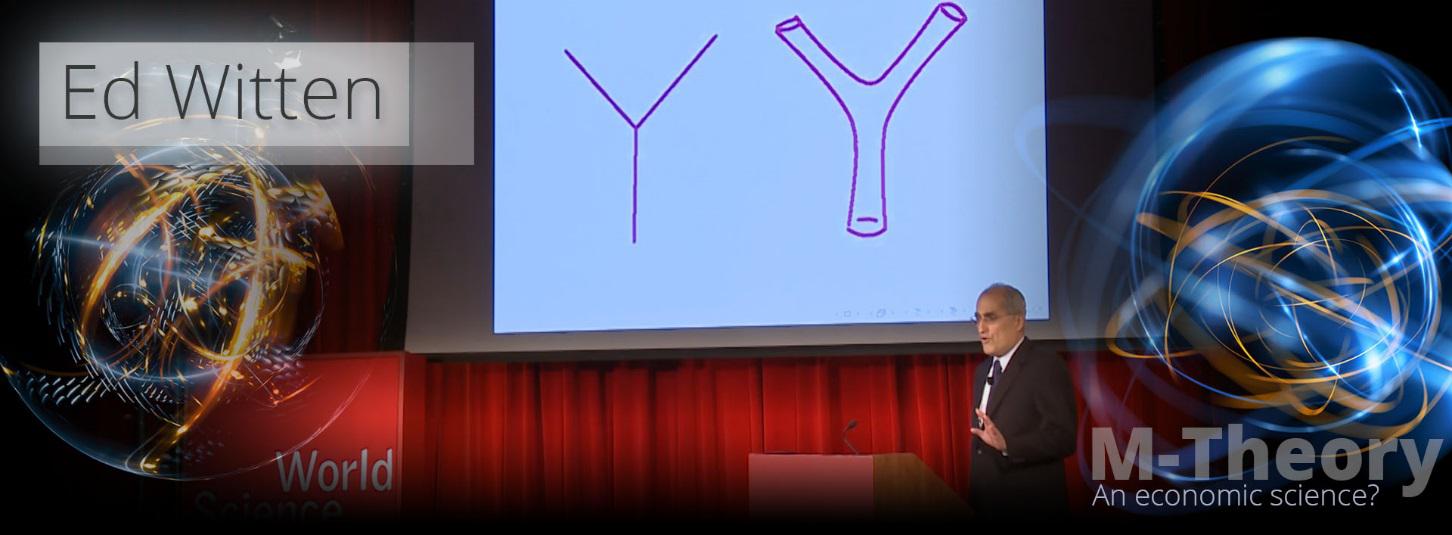
Above we see Professor Edward Witten present both the standard Feynman diagram in quantum mechanics and the string version; and as you can see in the standard quantum version, there is no tent at all, hence only by using string theory can the physics be unified, so creating a TOE.
The Peet Tent Limited Liabilities
For now, before the system is massive, there are some practical limitations such as provisions against lawsuits that would not have been made if not for the potentially deep pockets of The GGW String, and the many systems of M-System 1 and especially S-World TFS™ (Total Financial System) and S-World CRM CC™ (Company Controller); which collectively keeps a careful watch of every penny made and spent by every company, so we can see problems before they occur, which can mostly be fixed via better management and The Susskind Boost.
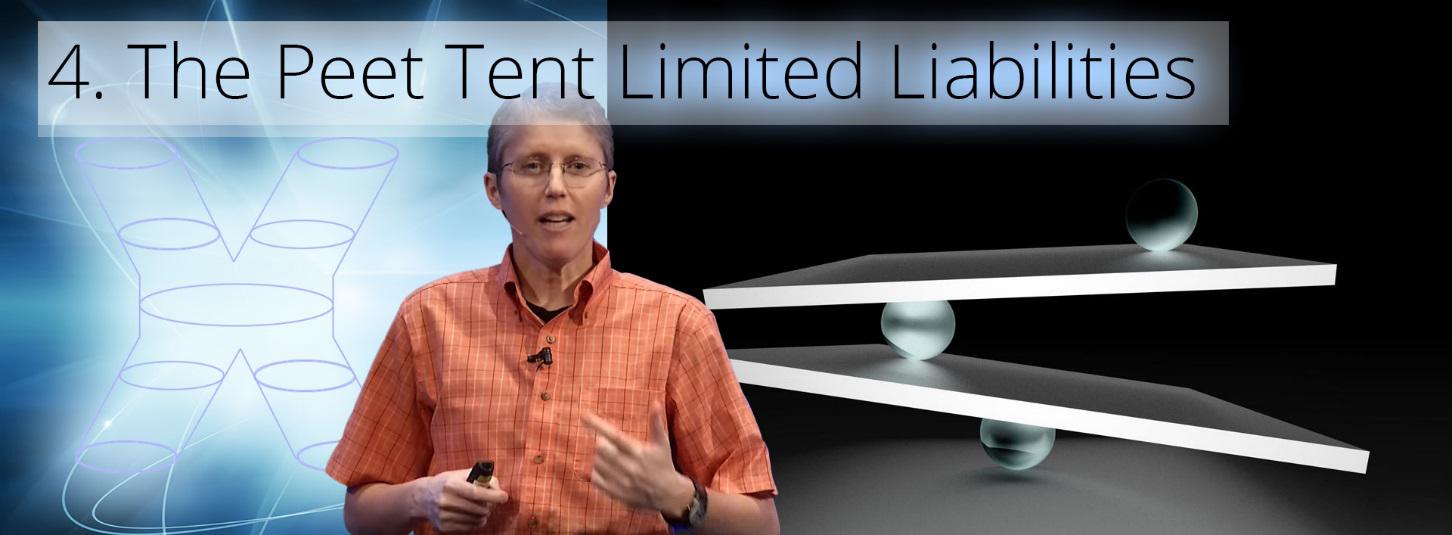
And in addition, comes Step 13. QSF (Quantum Safe Forecasting) which we shall look at shortly.
Before we carry on let’s see the system architecture again.
So far, we have looked at the original chaos theory inspired POP Steps 1 to 6, plus the string theory Steps 10 to 12; which creates the network’s underlying financial gravity and maintains its integrity. Next, we move onto Step 6b ‘Baby POP’ and see the creation of a cube of grand networks and ‘the boat.’
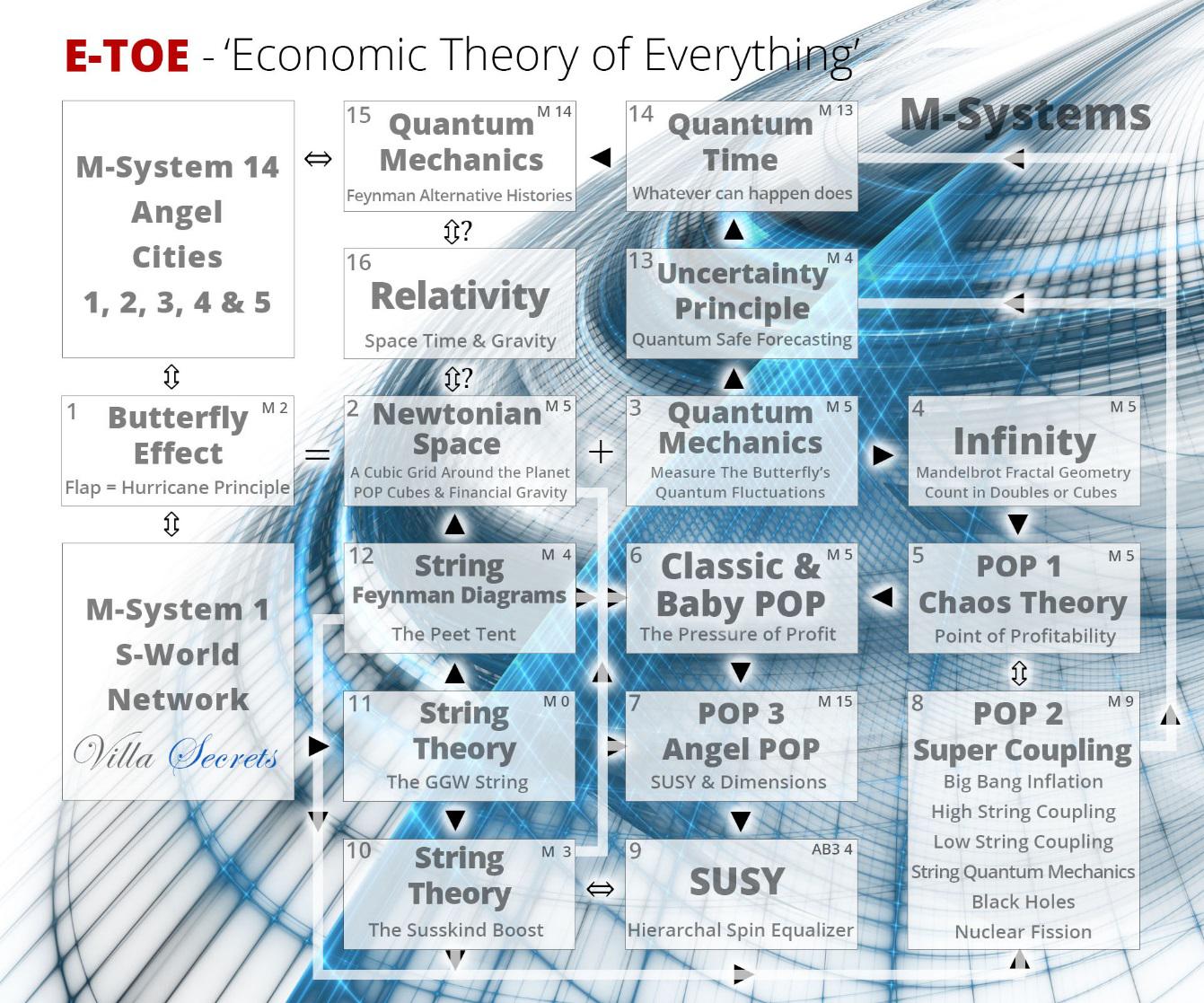
Baby POP Symmetries
Step 6b (M-System 5) – Baby POP – Grand Networks POP Train & Boat (2012)
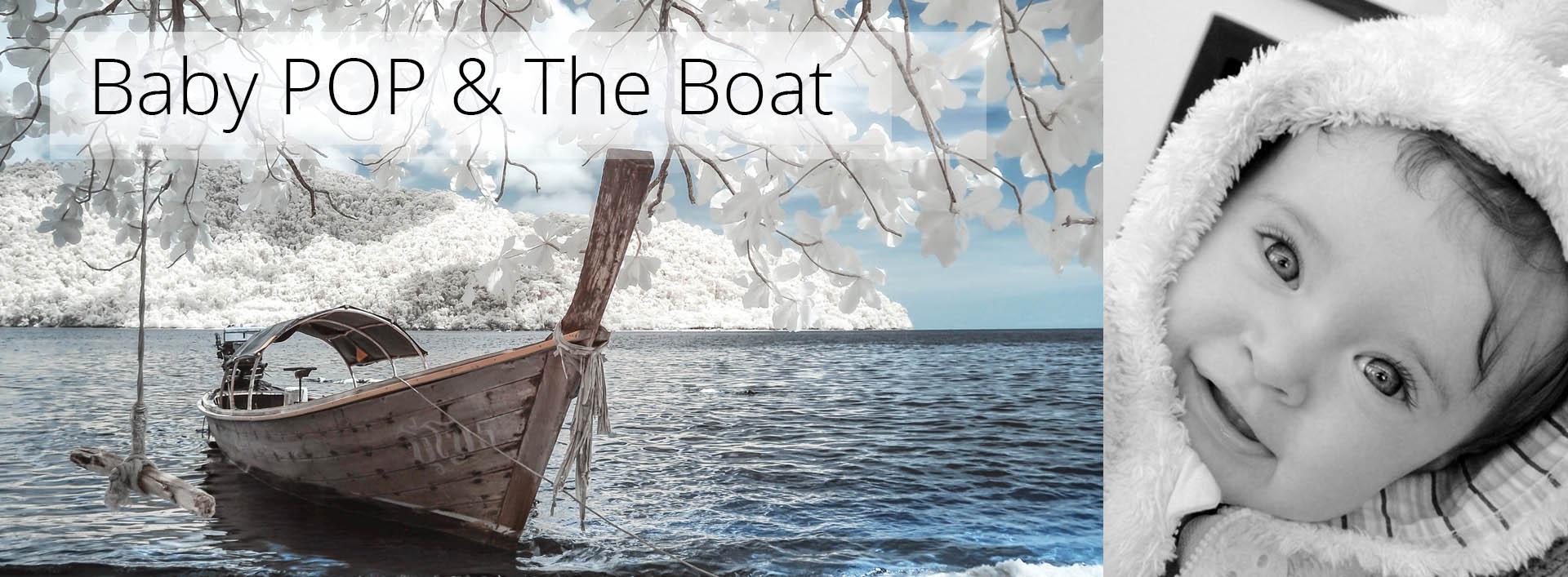
Baby POP was a derivative of the original POP investment principle for super grand networks that required a large investment and POP point for an initial super-grand network, but smaller investments and POP points for its offspring.
Like Classic POP, Baby POP invests per the train method; in fact, Baby POP is the same as Classic POP, just the POP point for new grand networks created is lower. This story is told in detail as the introduction to American Butterfly Book 3: The Network on a String (circa 2012).
http://americanbutterfly.org/pt3/the-network-on-a-string/prequal-CFM-and-POP
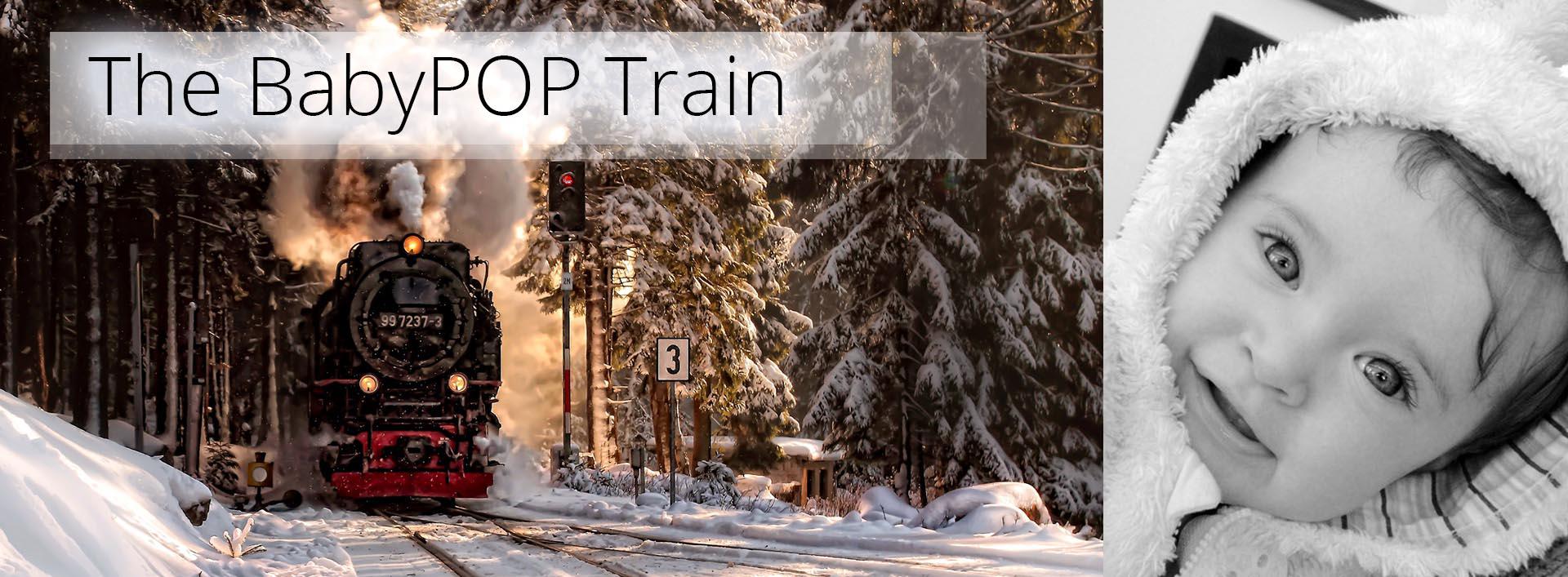
Here is the original graphic, showing now 16 grand networks investing per the train method of POP which eventually creates ‘The Boat.’ Full of investment profit, set for new adventures.
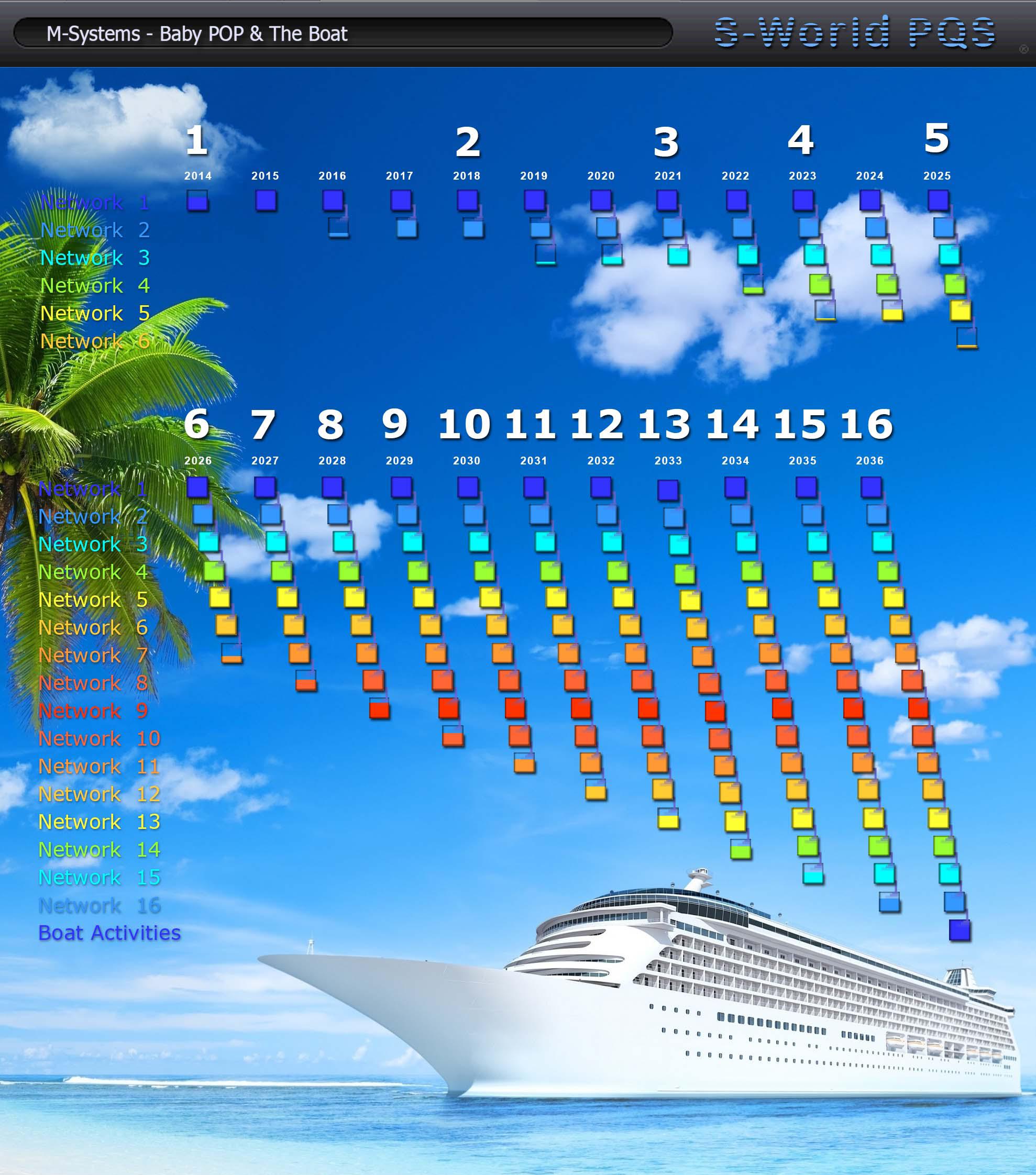
One thing that needs clarification is why is this model seems less explosive than the original, which after the 11th year created 2 new networks per year. The reason for this is in part due to being cautious in our estimations as middle networks have less tenders, but in addition because Baby POP has lower POP points for its offspring, there is not as much pressure.
To recap, once the original super grand network had reached its POP point, all additional profit pours into the creation of a new network. And later when this new network reaches its POP point, both the mother and baby networks combine to feed a third, and then a fourth until all 16 grand networks are making their POP investments in a train pouring their collective POP profit into what we called ‘The Boat,’ ready to sail away to fund the start a new super-grand network.
Next, we move to the great universal equaliser SUSY or SUperSYmmetry.
Step 9. The SUSY Hierarchal Spin Equalizer (2012)
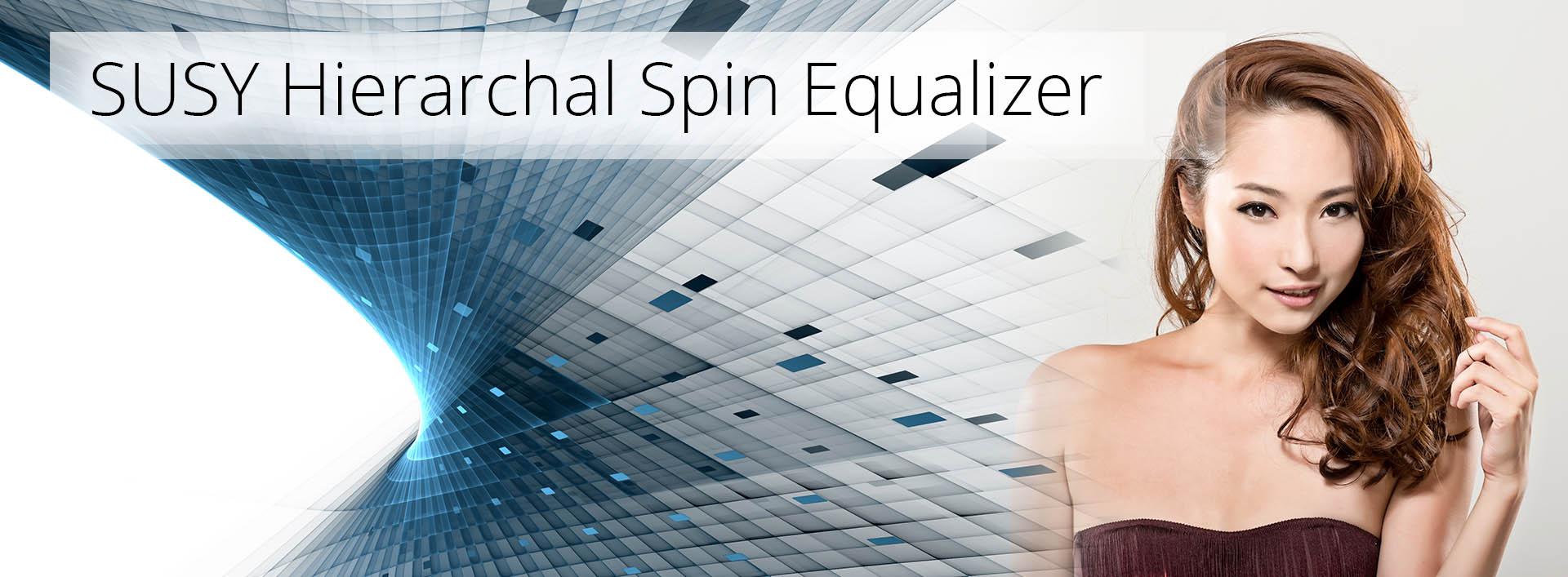
SUSY stands for Supersymmetry, the component that is added to string theory that created M-theory and a multi universal theory of everything.
The SUSY Hierarchal Spin Equalizer was created for the second grand network design, ‘The Orlando Network’ in 2012, to smooth out and even the POP investment capital of the networks within.
Based on a real-world plot of 9 square miles of land priced at $100million located near Orlando; over 2011 and 2012, a super-grand network was costed, and per Baby POP method was set to create 15 grand networks. However, when the expected POP profit from all were tallied up, it made for a very unpredictable picture, which to a degree was OK as all were in POP, and so the underlying financial gravity was solid.
But, was there a way to make the post POP profit made from each grand network more predictable?
To create evenness within the 16 networks, in the Autumn of 2012, the rather grandly titled SUSY Hierarchal Spin Equalizer was theorised.
http://americanbutterfly.org/pt3/the-network-on-a-string/susy-hierarchal-spin-equalizer

Below we see the original forecast for 2040 and the expected revenue generated by the 16 networks, which as we can see is a very random affair. Some will do well, particularly in the beginning due to tenders (Ť) such as contracts in construction, and at the end network due to the boat, but networks 6 to 15 were a lottery. Which, when we consider that M-Systems is based on making a less chaotic and more predicable economy, is not ideal.
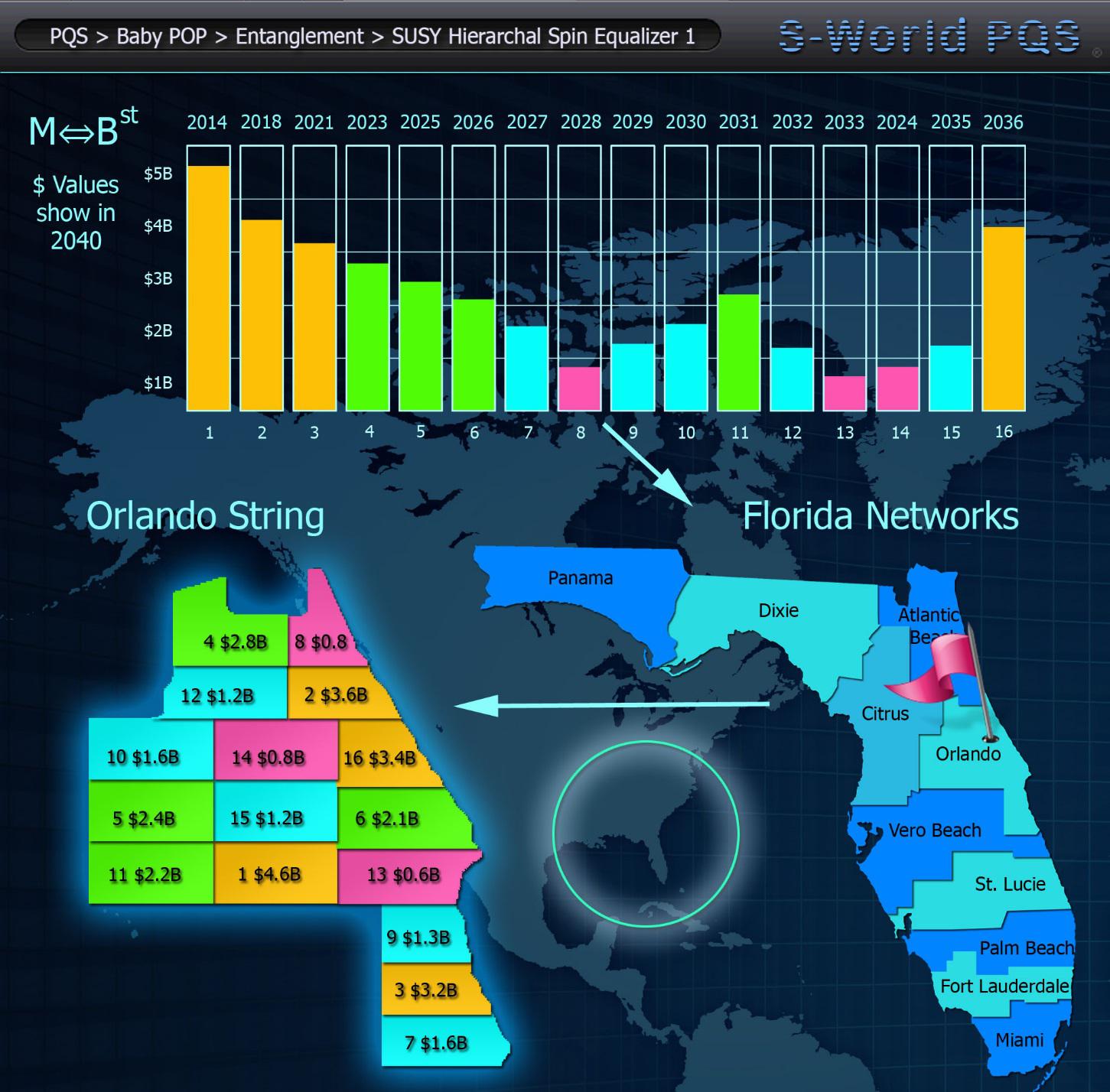
So, from a short video on Supersymmetry; the idea arose that for every particle, there is an equal and opposite particle.
This presented the idea of twinning all the 16 networks, so the weakest and strongest become one supersymmetric network, and the rest followed suite. This is why we have sets of 16 grand networks, because we twin the strongest and weakest to make 8 relatively similar supersymmetric networks, which in turn become a higher dimensional (D8) network cube.
The results are seen in the following graphic, in which we see that as supersymmetric pairs, all the grand networks have similar combined profit.
(Note in case anyone was wondering what the PQS is, it was the 2012 name for M-Systems – ‘Predictive Quantum Software’)
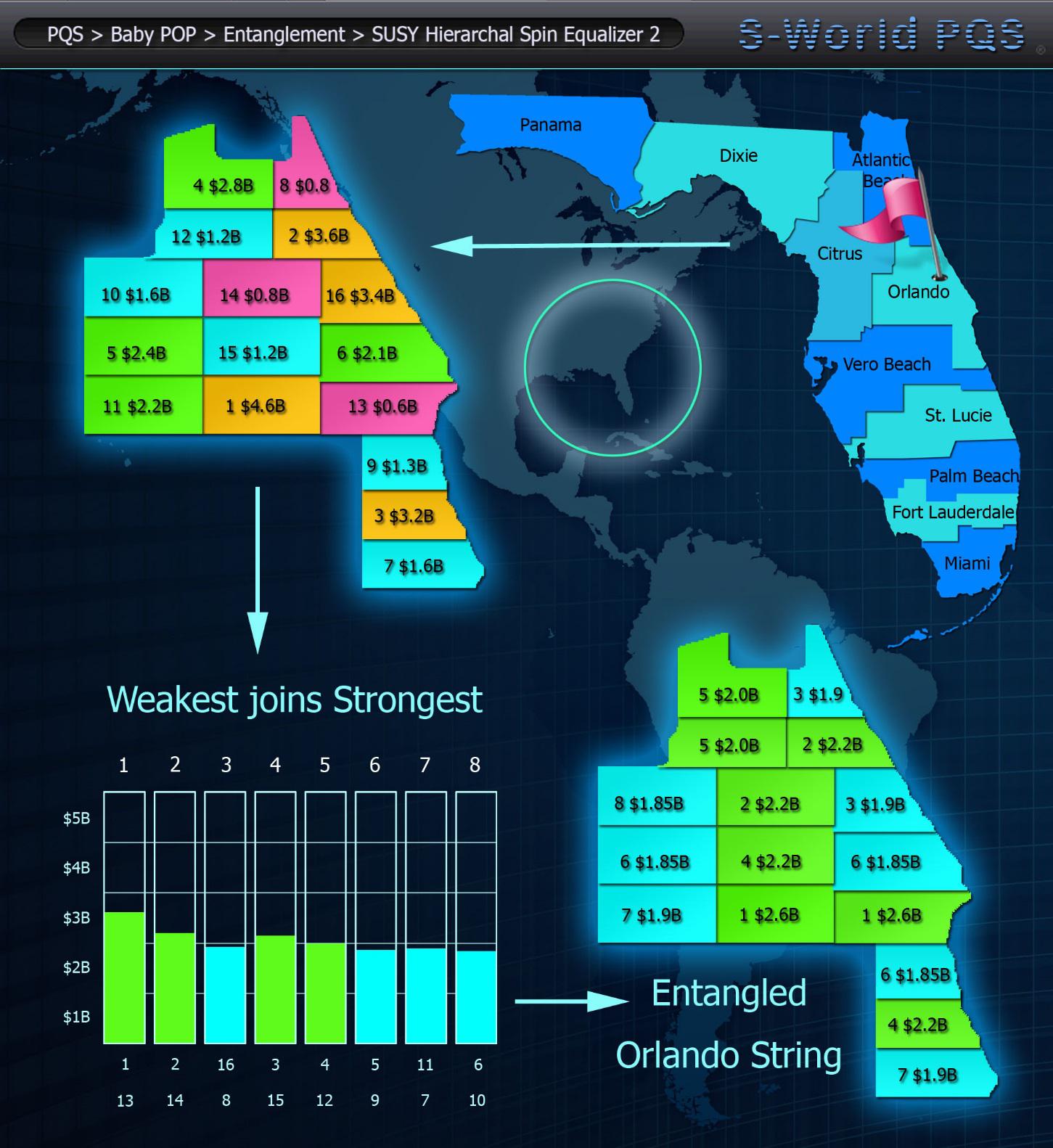
However, whilst this was a lot tidier and looked out for the little guy, it would always be seen as a penalty/tax of sorts to the stronger networks.
So, if instead of seeing the ‘POP boat’ (being the overflow of profit from all 16 grand networks) floating away to create a new grand network in a different location, once the last network has achieved POP; the boat will instead first invest into the weakest networks (per Susskind Boost method) until eventually all 16 networks become massive, and turn into super-grand-networks and a (D9) cube, which is 8 times as profitable as a D8 cube, an objective all companies in the network would love to achieve.
And because the networks are all entangled, boosting the weakest has the same effect as boosting the strongest, which for the stronger networks is the pay back from entangling the strings in the first place.
Chapter 2. Part 1e. Angel POP Dimensions
Step 7. (M-System 15). Angel POP (2012 – 2017)
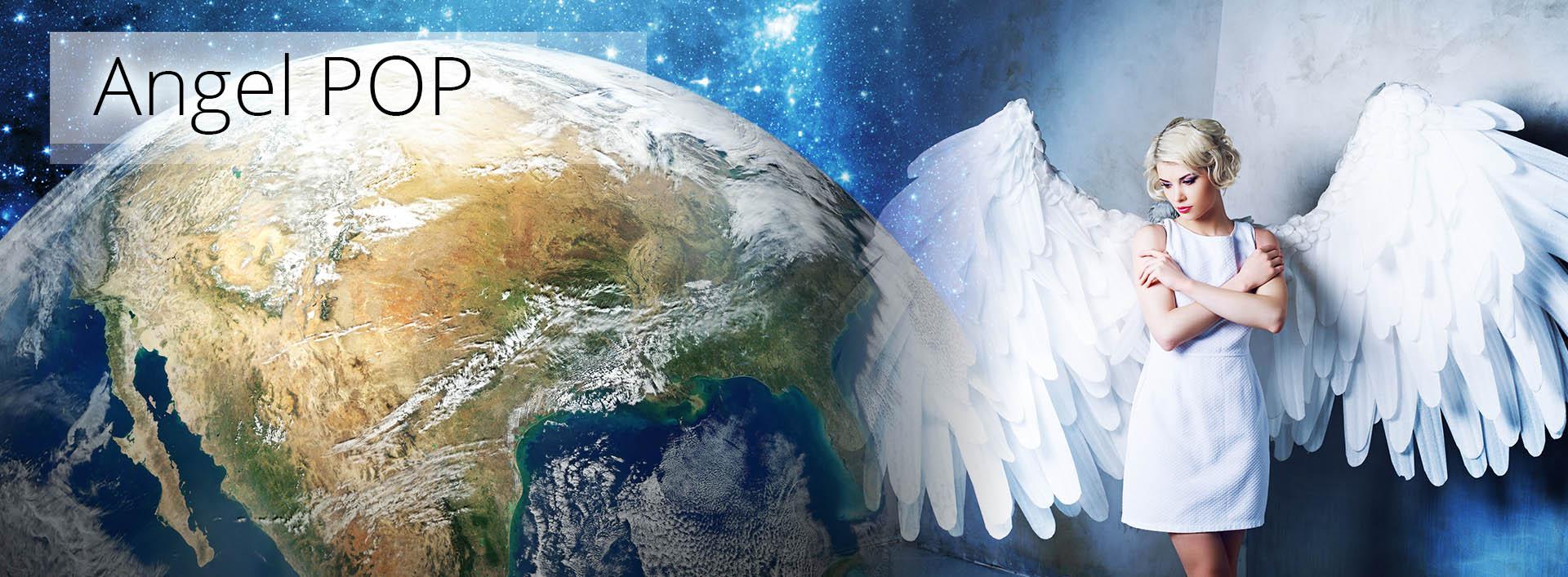
Angel POP enables all special projects. It is the magic supersymmetric source that underpins the S-World global network philanthropic, ecological, social and complexity saving ambitions; first described in November 2012 in Chapter 7 of American Butterfly Book 3, ‘The Network on a String’ http://americanbutterfly.org/pt3/the-network-on-a-string/angel-pop-global-benefits.
Angel POP creates symmetries between prime investment opportunities and opportunities that, without the Angel POP framework, would be considered economically unviable (an abject network).
And it restricts the growth of the network so that for every prime network created, there must also be one or more abject networks.
This system works in 2 ways:
- Complexly by creating a financial dimension such as ‘D8,’ where after all 8 continental cubes must be fully invested before any D9 options become available.or…
- Simply by twinning the first two networks as we create one in say California and another maybe in Malawi.
We shall look at Method 1 first, as that was the original inspiration.
Method 1. String & M-Theory Dimensions

One thing about string theory that makes most of us scratch our heads is that its mathematics only works in 10 or 11 dimensions. The 3 spatial dimensions we know (length, width, height) plus ‘time’ gives us our known 4 dimensions. But string theory adds 6 tiny curled up dimensions, so small we cannot see them. And M-theory adds the 11th dimension as a framework within which many universes, including our own, live.
I am yet to find a book or video on the mathematics of how these 11 dimensions work, which leads to the conclusion that the math must be too complex to be explained simply.
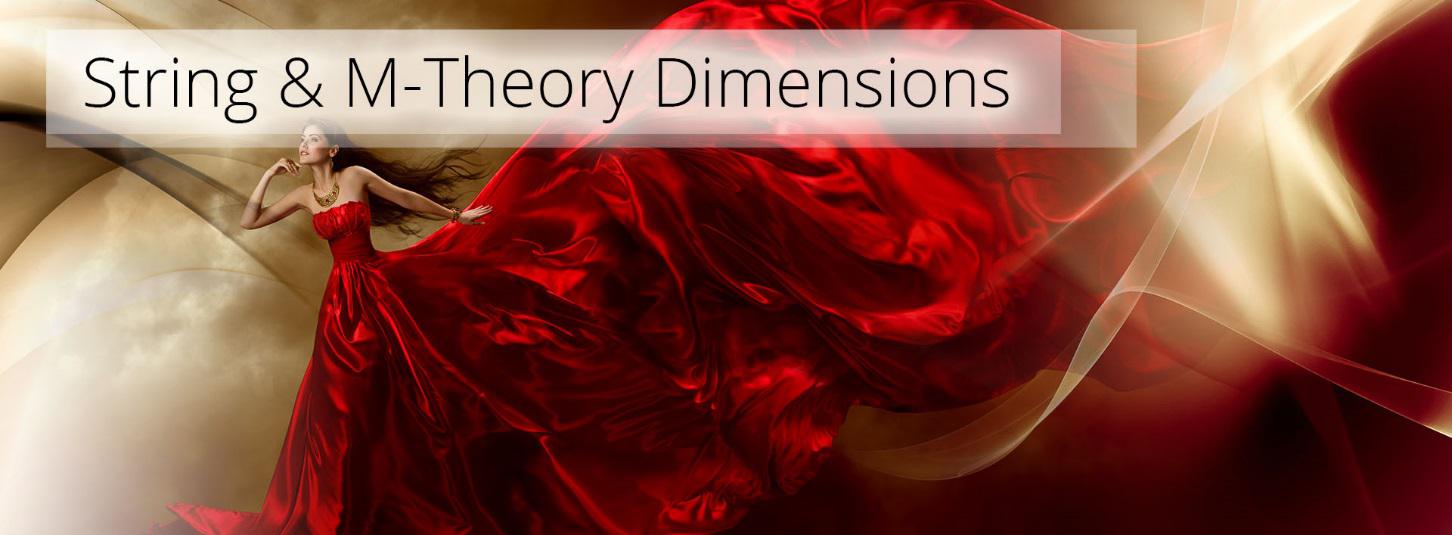
Within M-Systems we too work in dimensions, but they are very simple to understand as they are cubed. Which is simply a multiplication of an existing dimension by 8 as seen below. So, we fit 8 cubes within a 2nd dimension 8-cube, and 8 second dimensional cubes make a 3<sup<rd dimensional 64-cube, and the 4th dimension is the 512-cube and so on.
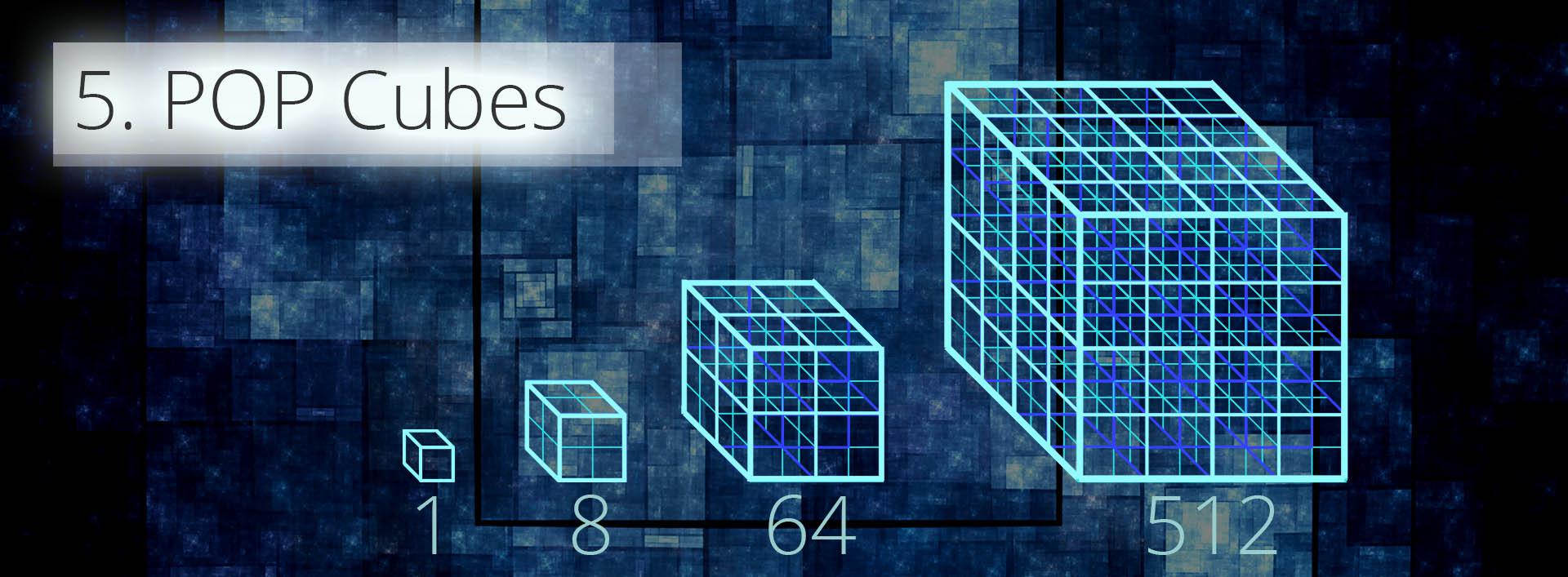
Let’s see this in practice…
$0.01 > $0.08 > $0.64 > $5.12 > $40.96
>
| $327.68 | D1 | Abject Poverty Company (Can be a single person) |
| $2,621.44 | D2 | Relative Poverty Company |
| $20,971.52 | D3 | Small Company |
| $167,772.16 | D4 | Standard Company (Primary Network in Abject Location) |
| $1,342,177.28 | D5 | 1st Tear Network (Primary Network in Relative Location) |
| $10,737,418.24 | D6 | 2nd Tear Network (Primary Network in Prime Location) |
| $85,899,345.92 | D7 | Grand Network (Small Resort Development) |
| $687,194,767.36 | D8 | Super Grand Network (Large Resort Development) |
| $5,497,558,138.88 | D9 | 8 Global Network Cubes #1 |
| $43,980,465,111.04 | D10 | Once D9 is full it opens D10 |
| $351,843,720,888.32 | D11 | Angel City 2 Target (2024) (Only opens if there is no D1) |
| $2,814,749,767,106.56 | D12 | Angel City 3 Target (2032) (Only opens if there is no D2) |
| $22,517,998,136,852.50 | D13 | Angel City 4 Target (2048) |
| $180,143,985,094,820.00 | D14 | Angel City 5 POP Target (2080) |
| $1,441,151,880,758,560.00 | D14 | Angel City 5 Turnover Target (2080) |
Note that in the same way we must include the lowest paid company, being D1, where some individuals would for a dollar a day in countries in abject poverty. We must also in D14 account for the maximum market share (being all of GDP) expected in 2080. (Working on an increase in current GDP of 3% a year making $508 trillion, which may be increased (but not inflated) by about 180% due to the majesty of the E-TOE & M-Systems.)
How Angel POP works on a macroscale is to create 8 even continental network cubes and restrict investment into the richer cubes once they reach a specific POP point. Once any continental cube generates more than this amount, its POP investment needs to be invested in the cubes that have not reached their POP point. And only once all 8 continental cubes are in POP (are making more than their POP point), does the next dimension open.
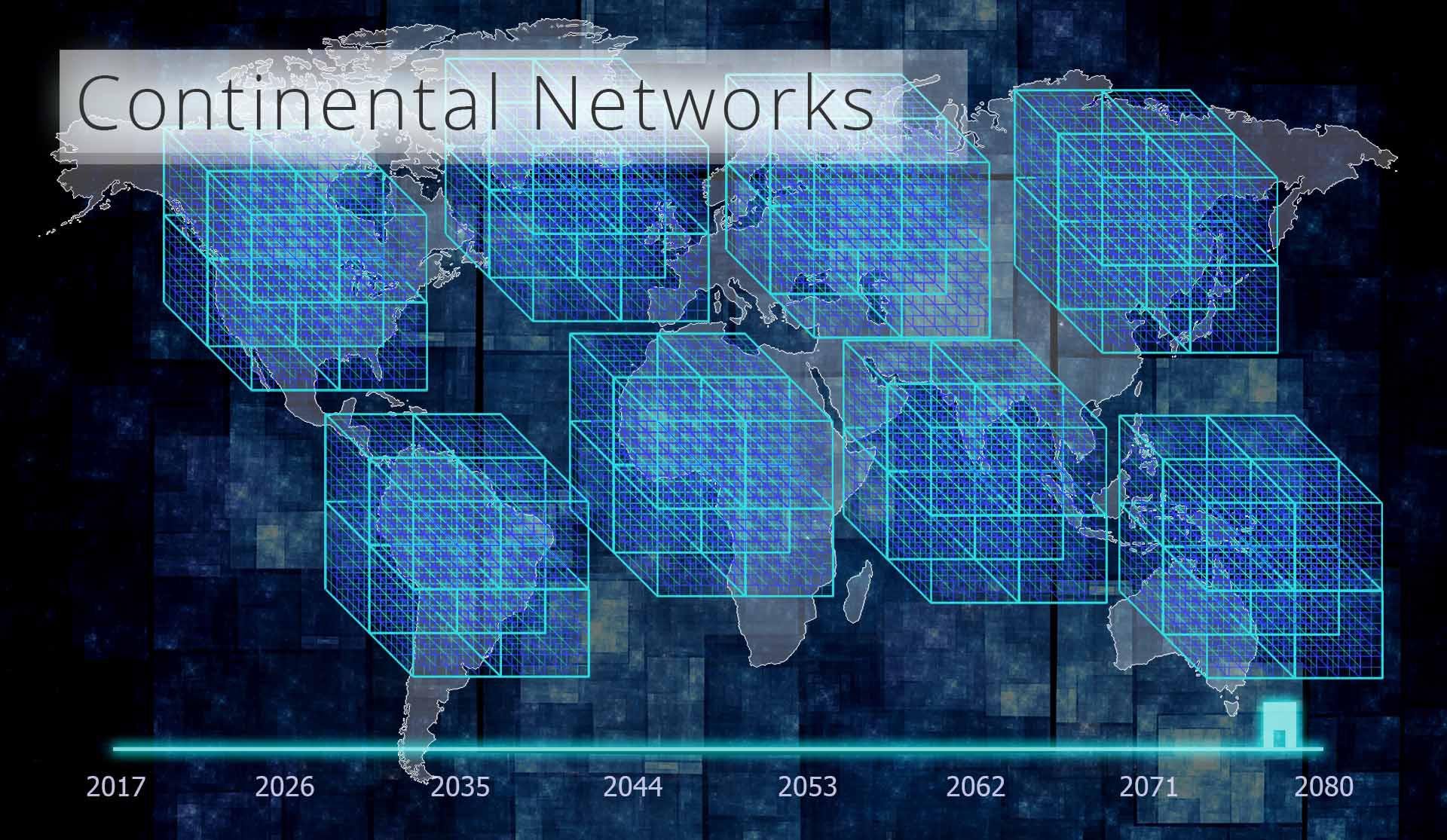
The important simple but very powerful point on the mathematics which made Angel POP the champion of American Butterfly is when working in this way, one finds that due to the power of the POP investment train, the last companies in a closed/restricted network (which would usually be the least economically desirable locations), get made very quickly due to the pressure of all the other continental networks POP profit channelling into them. And that the very last 1% of the cube, which would be the least desirable locations on the planet, will be fully invested in no time at all.
And so, when investment is generated, any location specified within the current dimension
will eventually become a success; and due to this quality of Angel POP, it makes such investments appetising in the first place.
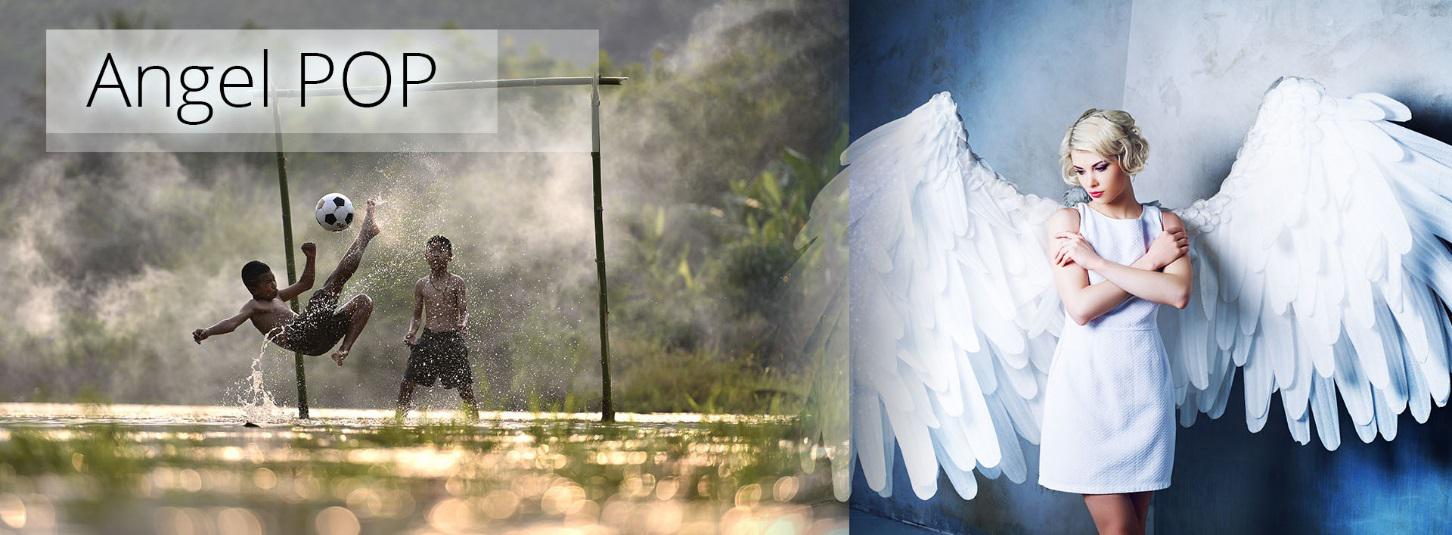
And that’s ‘Angel POP’
From the first principle, the simple idea that if the S-World network is successful, then even the most undesirable economic locations become desirable due to their predetermined eventual success. If the S-World Network becomes massive, all locations designated as networks will be a success.
This system is the exact opposite of a pyramid scheme, as where a pyramid scheme does not make anything, S-World Networks make everything and is a theory of every business; continually budding into new small owner-led companies, made super-competitive due to the systems and the gravity of the network.
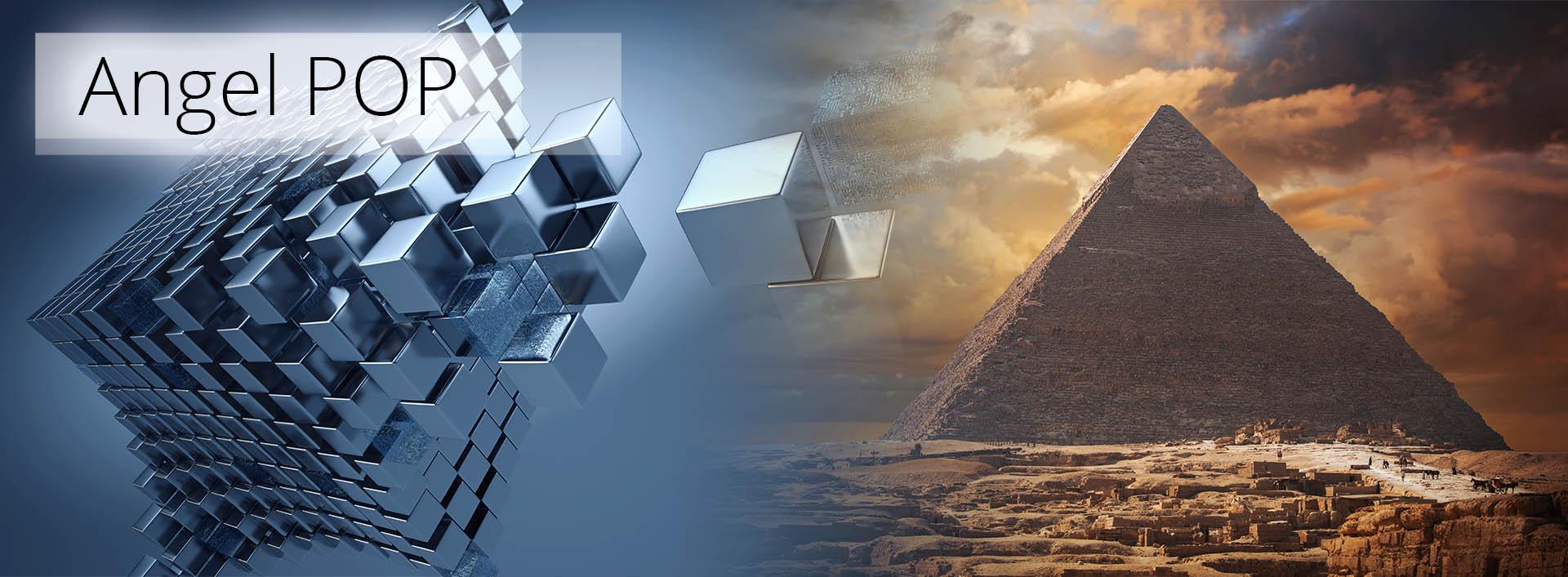
Instead of a pyramid we have a cube; and within, a circular butterfly effect. As at the end of the journey, we start again from the beginning but with greater force, as is seen in the following 2016 system design.
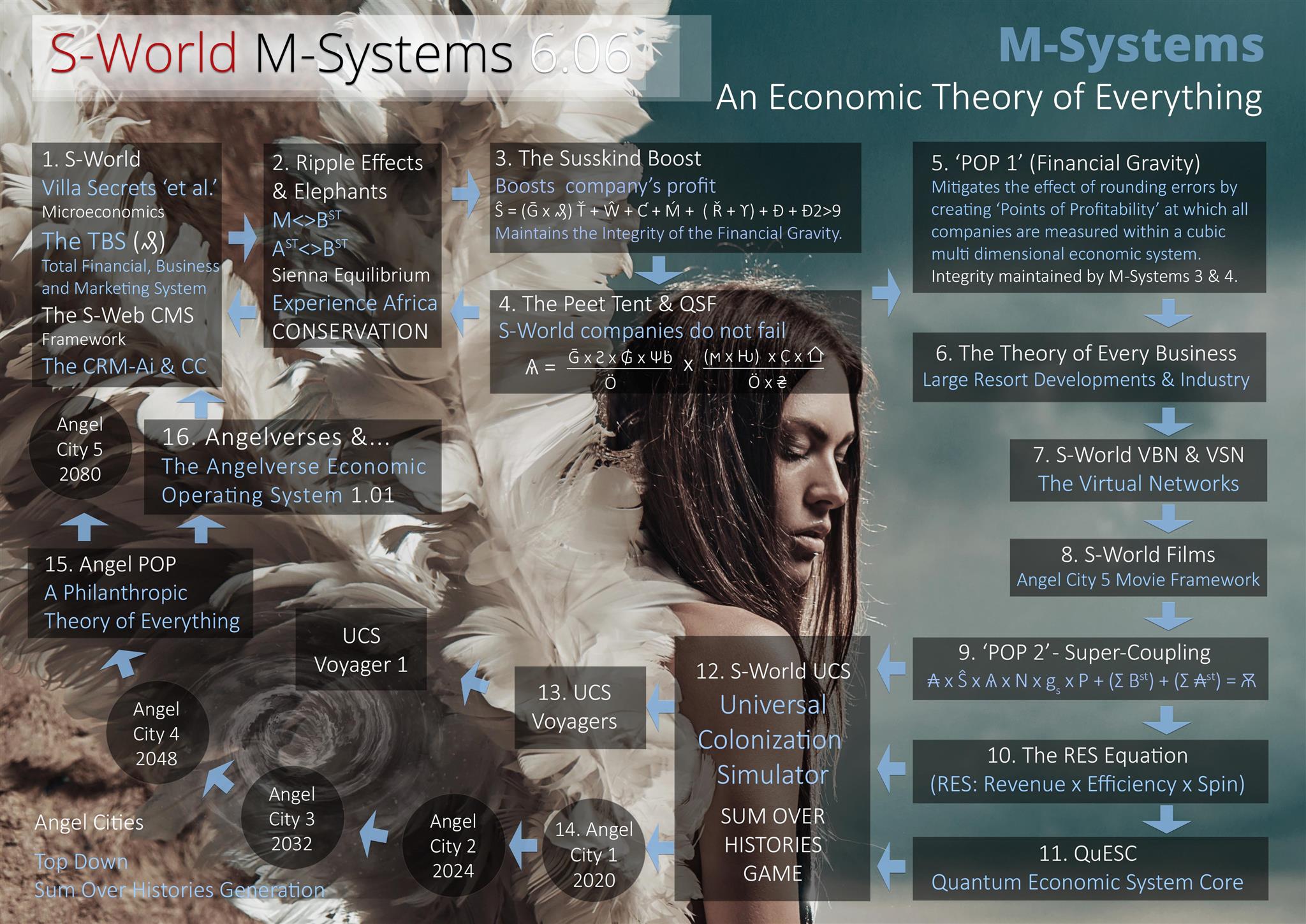
From a physics analogy perspective, we present a theory in the making ‘POP-C.’
Consider Einstein’s Special Relativity and the law of diminishing returns in terms of reaching the speed of light (the ‘C’ in Einstein’s E=MC2).
Note we are not following the math precisely, it’s just an analogy that seems to fit the model, which demonstrates that the Angel POP system has a law of accelerating returns.
When Travelling at 90% of the speed of light, time slows down by about 50%. And if one is at 0.004% of the speed of light then time slows down by 25 times; and the faster you go, the slower time travels. And in fact, one can never reach the speed of light as time would stand still.
In comparison (but in reverse), when a closed POP dimension such as D9 is at about 90% completion, time speeds up (the time it takes to create the network is faster) and at 99% it gets very fast, and at 99.9% its velocity is huge, which completes the Network dimension ‘D9’ at record pace, and opens ‘D10’ despite 25% or so of ‘D9’ being applied to countries in abject poverty.
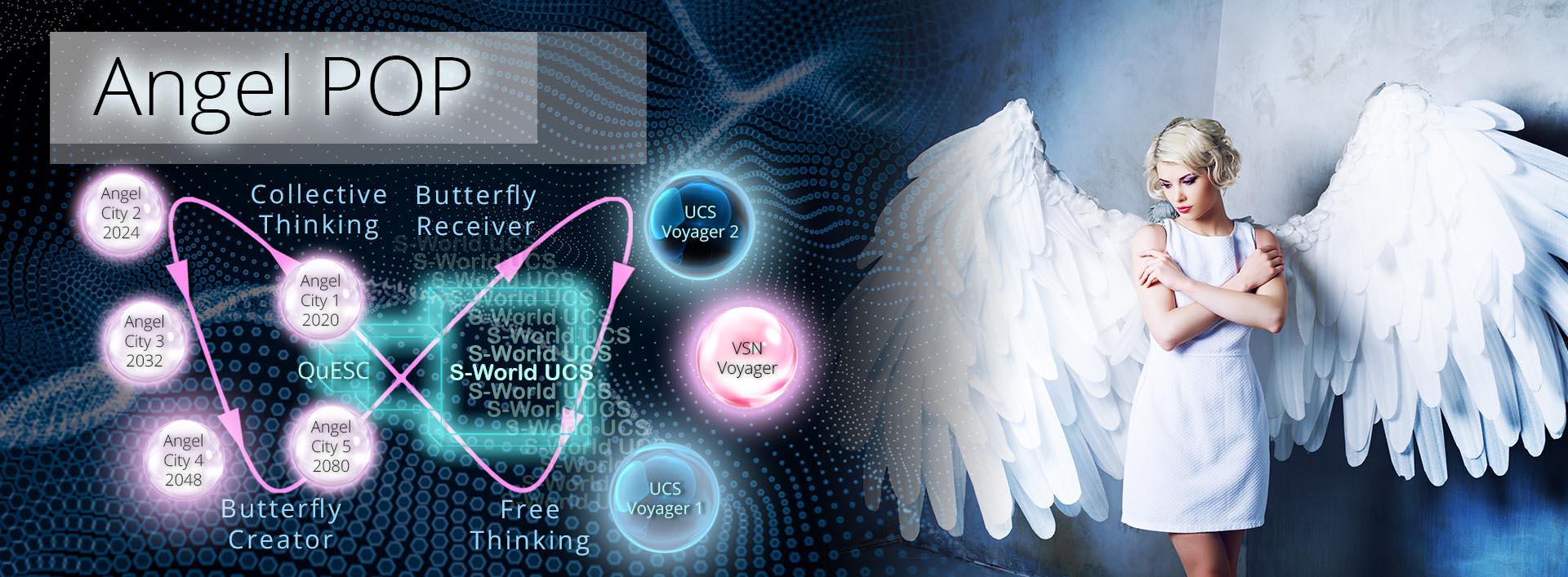
Angel POP Dimensional Math
One point on the math, before D11 can open, we would like to have eradicated all D1 (abject poverty) within a certain catchment area from grand networks constructed. And whilst this is, to a degree, contorting the model to fit with the 10 dimensions + time of M-theory; having made the contortion, it seems suited to the model.
Albeit there is a good argument that we should work in 9 spatial dimensions not 10, as the M-theory dimension is equivalent to the Angel Theory framework (answers on a postcard please?).
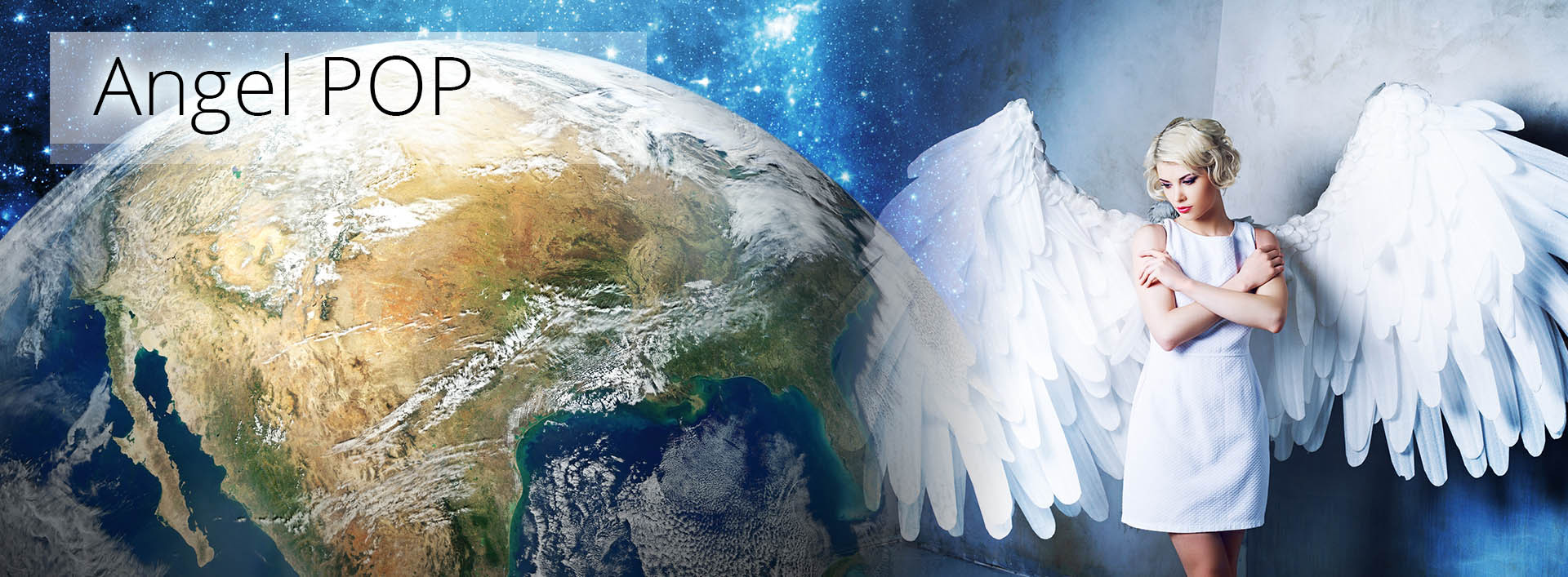
Original Angel POP Principle (2012)
The original Angel POP principle was written in D14 (14 cubic dimensions) extreme macroeconomics within American Butterfly.org and by 2080 demanded 32,768 different grand or super grand networks, spread evenly across the world. This figure was primarily based on the number of medical facilities and operation centres needed so that everyone on the planet was close to a medical facility, and that each operation centre could locally create economic opportunities.
And while this sounds like a lot, when we break it down (prior to the mid-21st century), we are only looking at 1 grand network per continental cube every 4 years.
Of the 32,768 virtual networks only 4,096 need to be physical grand networks, the rest can be virtual (grand networks not attached to a real estate development). We then must divide by 8 for the continental cubes leaving 512 physical networks per territory. Which we further divide by 16, due to the magic of Baby POP, which leaves us with 32 grand networks over 64 years. So, one every 2 years, or one network every 4 years for the first 32 years, and 1 every year thereafter.
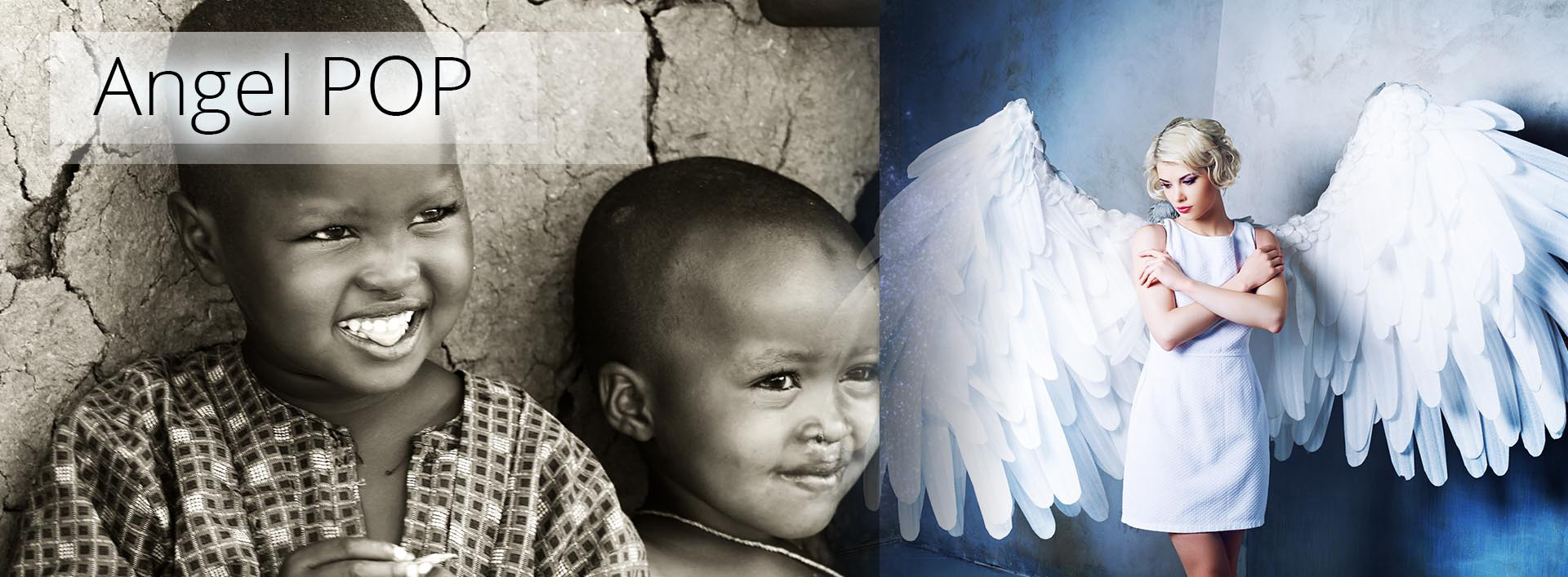
Angel POP Method 2. Twinning (applying a symmetry) to the first two networks
The beauty of Angel POP is that it creates symmetries between prime investment opportunities and opportunities that, without the Angel POP framework, would be considered economically undesirable. Where an economically desirable S-World virtual network opportunity such as Villa Secrets California is twinned with an undesirable economic opportunity such as a grand network (resort development) in a location in abject poverty such as in Malawi (Lake Malawi).
By creating strong networks of S-World companies in California, starting with Villa Secrets and moving into all real estate and travel then beyond, with each company contributing at least half its POP investment into the Lake Malawi (or other abject location); the stronger we become in California, the stronger our abject network becomes.
Working in this way and working on a principle that for every virtual network in a prosperous location, a grand network is built in a location of poverty; as the network grows, it does so evenly across the world bringing opportunities to locations of abject poverty. And because of this:
“Grand Networks in areas of Abject Poverty are Special Projects”
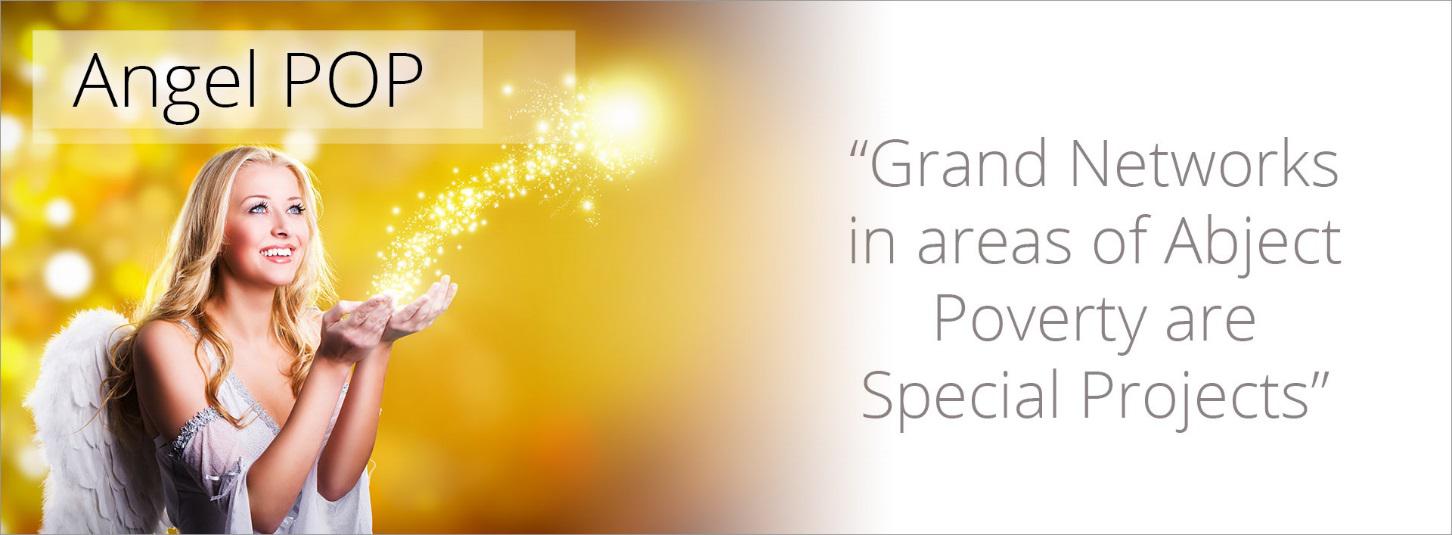
Because of Angel POP we are creating a system where everyone who works within, be it a film star, a rocket scientist, a domestic helper, a construction worker, or a teacher; no matter their location, all contribute to the special projects and making our utopian 2080 Angel City 5 vison a reality.
POP is the system that turns a technology solution from one that threatens jobs to one that creates them. A variation on Sam Altman’s (Y Combinator’s) vison for the future where technology has helped the world to the degree that most of the world are paid for to do nothing, but incorporating the Chan Zuckerberg philosophy of helping people to reach their potential, where people have a choice to work or not.
Because of Angel POP, we turn a set of super-capitalist businesses into what may well be the most progressive charity project on the planet. A point that we shall present to the Bill and Melinda Gates foundation, as in many ways their model inspired ours; and Facebook founder Dustin Moskovitz’s www.openphilanthropy.org who asks, ‘How can we accomplish as much good as possible?’
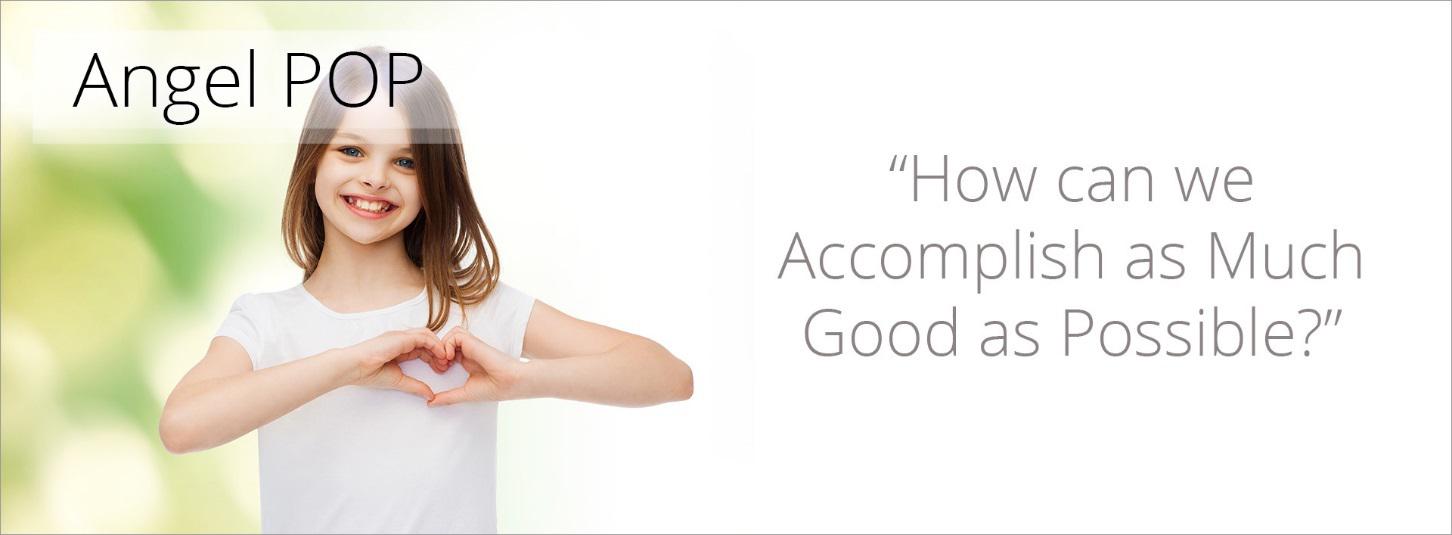
The Gates Code, Supersymmetry, Simulated Universes & President Obama
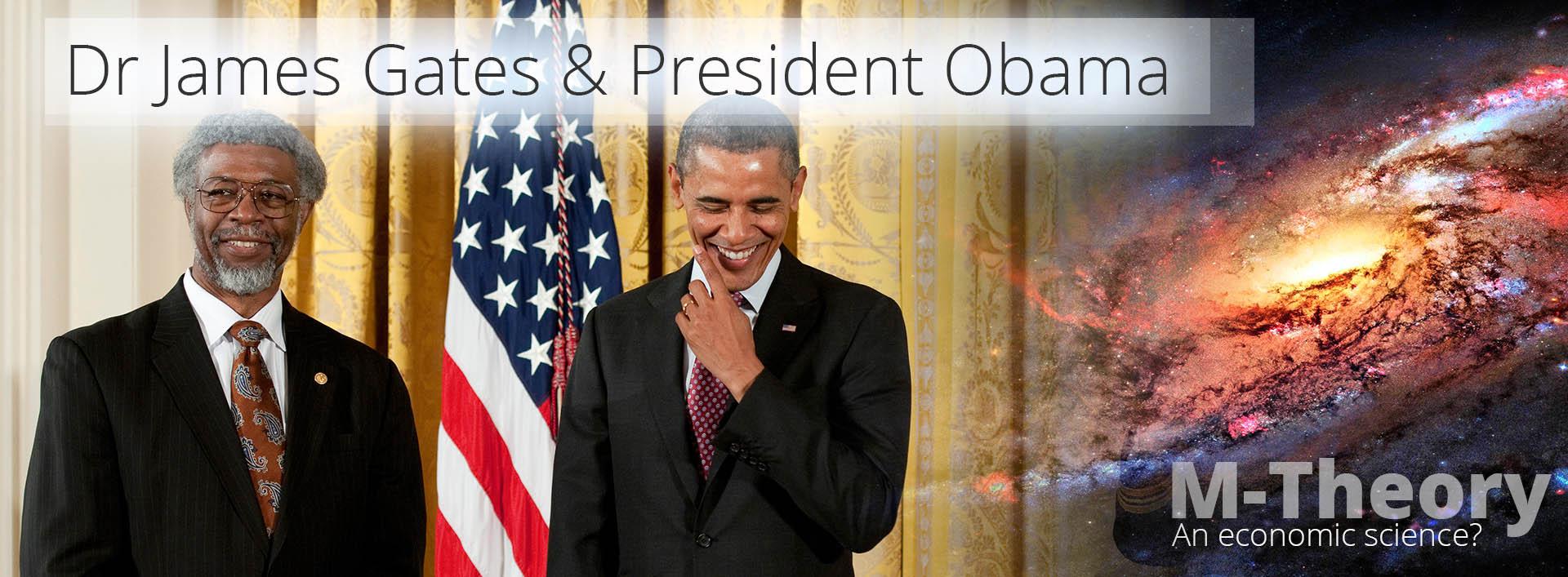
Shortly before writing Angel POP, I was intrigued with Gates’ paper in Physics World, ‘Symbols of Power,’ in which Gates found web browser correcting code within the equations for supersymmetry, the multi universal theory that was added to string theory to make M-theory.
This curiosity changed my view on the creation of S-World virtual network from a virtual world to a simulated universe (more on this in later chapters).










